A sense of purpose
Hello, my name is John Brownbridge. I live in England and retired 2 years ago after a career in the motor industry. Along with cars, photography and hi-fi have been lifelong interests.
My first camera was a Zenit E, bought in 1976 with money from a Saturday job whilst still at school. It taught me the basics; it was very basic. When I could afford something better, I bought a Yashica FR1 SLR which started my love affair with the Contax/Yashica system. This was about the time I bought my first hi-fi system (Dual 505 turntable, NAD 3020 amp and Celestion speakers, for those old enough to care).
I dreamed of owning a Contax RTS and eventually found one second-hand in the mid-80s. In the 90s I bought a Contax ST, an S2, and the lovely T2 and T3 compacts. I still have them all. Sadly Contax/Yashica didn’t survive the switch to digital, so I knew I was going to have to start over. My first digital cameras bought in 2008 were a Nikon D700 and a Lumix LX3, which I much preferred for its small size and lightness.
I was losing interest and then the Fujifilm X100 caught my attention. In late 2012 I bought one. I loved it and didn’t use the Nikon or LX3 again. When the X-T1 came out in 2014 I sold the Nikon and switched to Fujifilm. I thought then that the X-T1 was the closest to the Contax RTS in form and feel of any digital camera I’d seen. If you compare the X-T1/XF35 1.4 with the RTS/CZ50 1.4 they are pretty much identical in size – but the Fuji is about 2/3 the weight. It’s easy to forget how heavy 1970s/80s cameras and lenses were. Fuji are the spiritual Contax for me – they are the digital cameras Contax would have made (X-T = RTS; X-Pro = G Series).
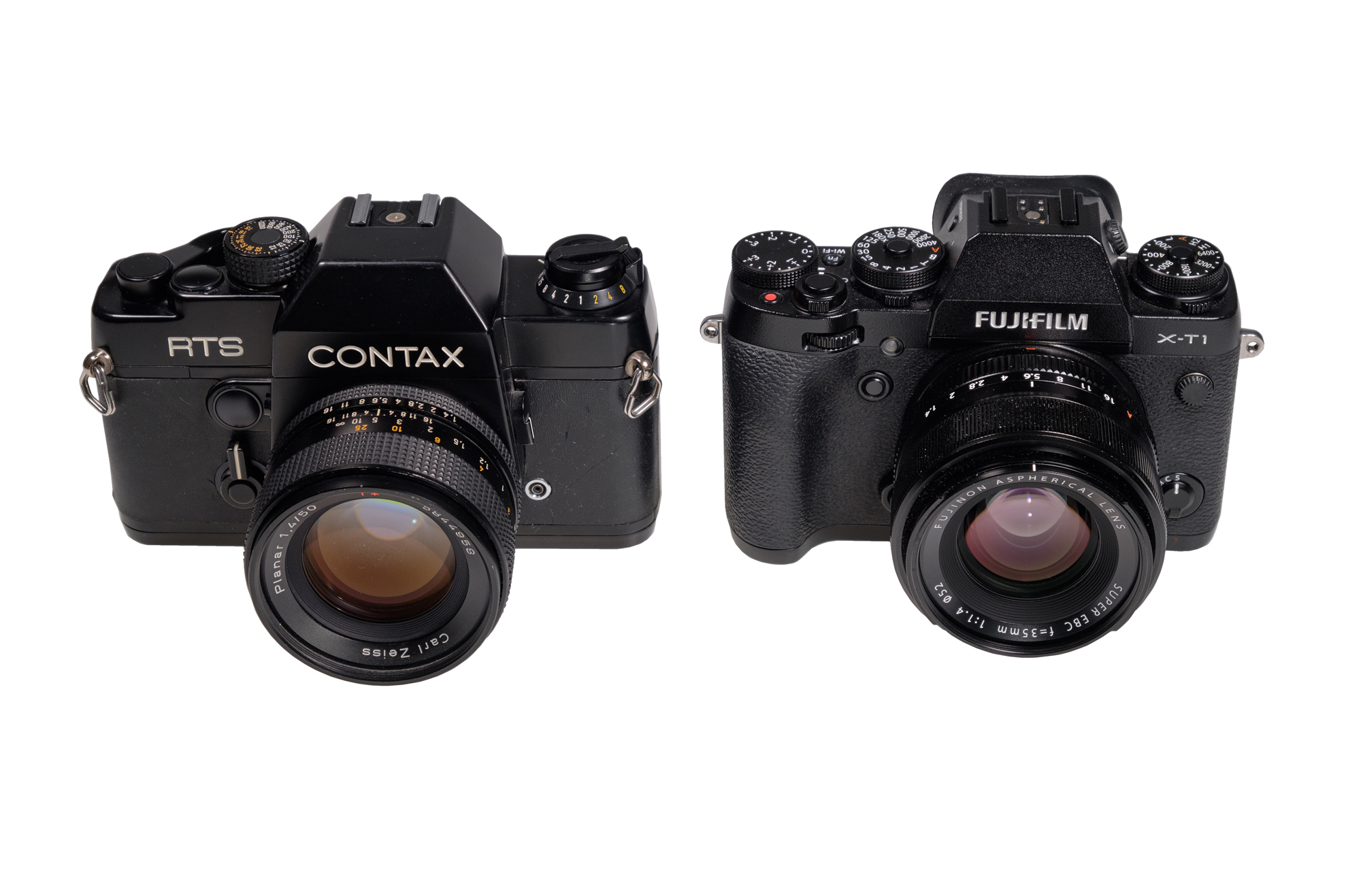
Since the X-T1 and 18-55 zoom I’ve bought XF prime lenses, an X-Pro 2 and X100F. The X-Pro 2 is my main camera and, I can honestly say, the best camera I’ve owned.
Throughout my life, perhaps not untypically, my interest in photography has waxed and waned. However, the last 6 years have been the most creative I’ve had. I know this is a cliché but holding and using Fuji X cameras makes taking photos so enjoyable. A camera is a personal thing. You hold it to your face. You clasp it in your hands. You feel it. Cameras that are nicely designed like the X-series are a pleasure to hold and use, so that’s exactly what you do.
Staying motivated and having a ‘sense of purpose’ is paramount. I’ve found new ways that work for me. I make physical photobooks of travel and projects, and I’ve started home studio photography as I’m helping a new hi-fi business with its marketing. I’ve taught myself from scratch, learning through trial and error. I’ve found techniques learnt for photobooks helped with the studio photography and vice versa, especially with photo editing.
Photobooks
In 2015 I visited friends in Hong Kong and took the X-T1 and X100 with me. Inspired by friends who’d done something similar, I thought I’d make a photobook using an on-line printing service. Just having this in the back of my mind led me to search out subjects and locations that could help create a ‘travel story’. Back home, I took time working on the photos and set about making the book. I established a strict rule from the start – no more than one photo per page, with ‘double page spreads’ being used for emphasis or the start of new sections. The book was going to be large (30x30cm) and have between 70 and 80 images. This meant ruthless editing in the original meaning of the term – selecting which photos to use.
I’d taken about 2,000 shots. About half of the pictures I took were possible candidates for the book. I’ve come to realise how much forcing myself to edit them down to a long list and then a short list taught me about my own photography. It has influenced how I take photos ever since.
I enjoy the editing process, especially looking for photos that work well together. It is interesting to find how having a second look at rejected photos after working with other pictures helps you see the potential in images you missed first time round. It is influencing me now when I’m out shooting. I find myself thinking instinctively about creating pairs of photos for a book or, if I can’t get close enough to a subject, I’ll think about cropping in post-production. In the past I would likely have let the shot go. I’m less likely to wander around waiting for something to catch my eye, I’m more likely to go out looking for specific subjects.
For me there’s something special about printed photographs and even more so when collected together in a book. Though my books are seen by only a few people there is a sense of permanence and added significance in a few collected images. It is a very different experience to scrolling or swiping through hundreds and thousands of images on a screen. Modern printed photobooks are also a world away from the old photo albums of the past!
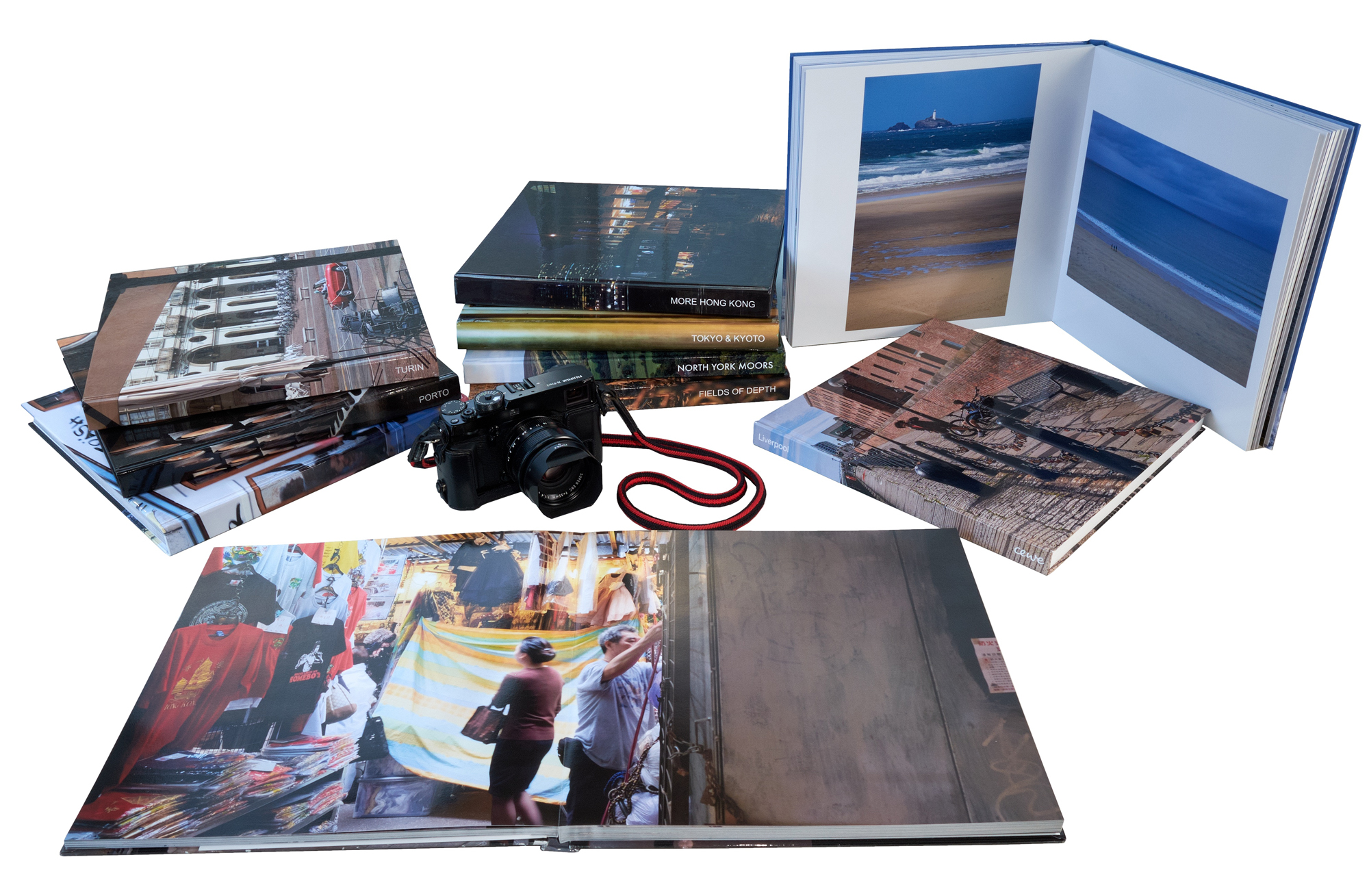
I’ve made 11 books so far, and they have become part of my life. As an amateur photographer I don’t publish them. I learn a lot about my photographic style from re-looking at these books. It is a way of being reflective that helps you understand your photographic self. It’s a small personal library that I enjoy revisiting, finding inspiration and motivation for future projects and renewing my sense of purpose.
One thing I’ve learned is that my photography tends to be rather formal compositionally. In my mind this is neither a good nor a bad thing, just the way it is. I think it may come from my post-production technique, cropping and straightening photos. I’m also partial to splitting compositions into 2 or 3 vertical segments, often putting one of the divisions close to the centre of the frame. This has become instinctive.
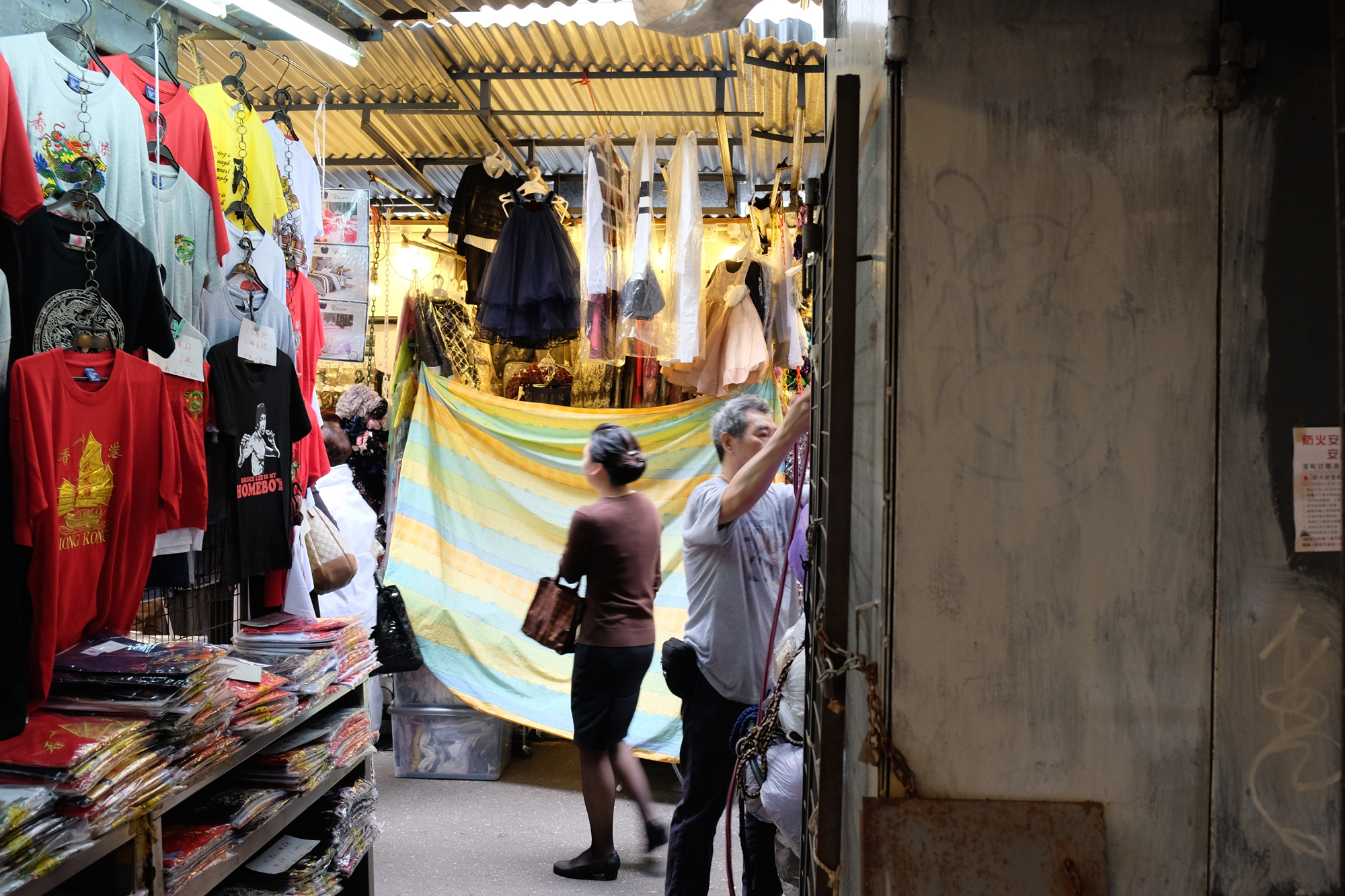
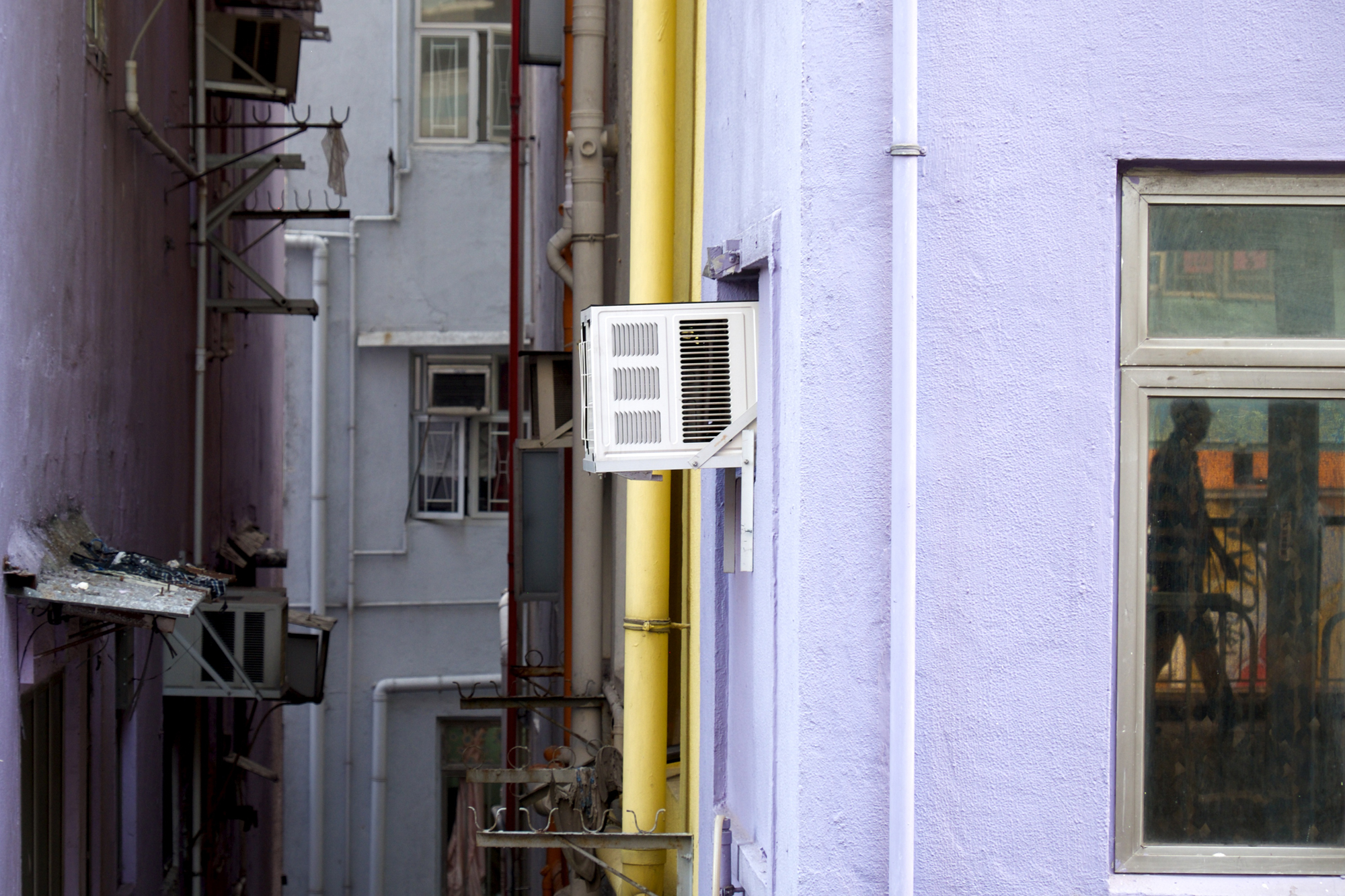
Both of these pictures from Hong Kong and the one from Lisbon were printed as double page spreads, which means they are nearly 60x30cm with a widescreen aspect ratio in the books. Choosing the right images for the double spreads is one of the most enjoyable parts of assembling a book. Sometimes the most surprising pictures work really well at that size.
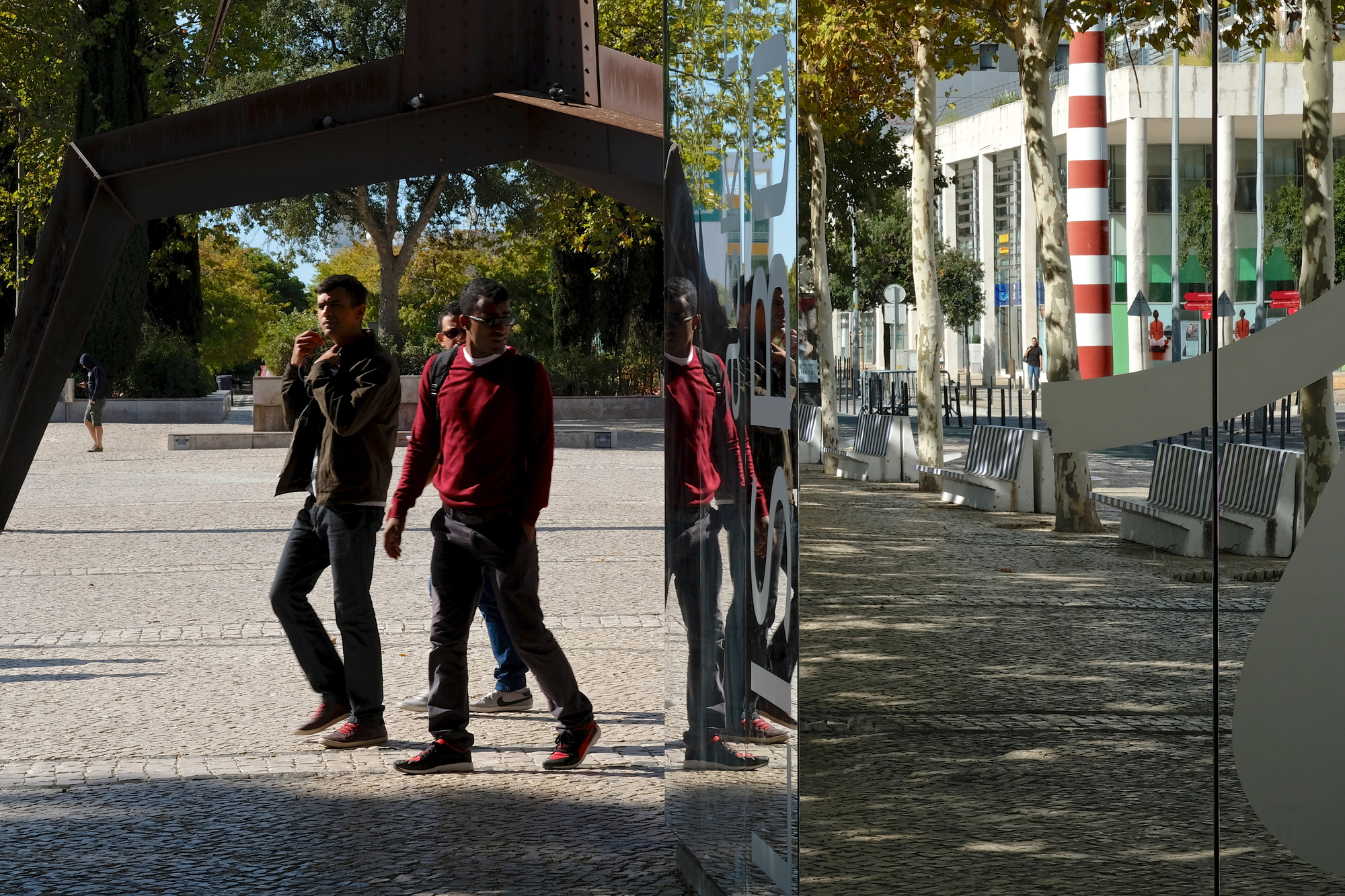
Even my street photography seems to have a formal style. Though these are fleeting moments, the pictures seem to me to have a more thoughtful character rather than a spontaneous feel. I think this is maybe because I was waiting for the right people to walk through the scenes.
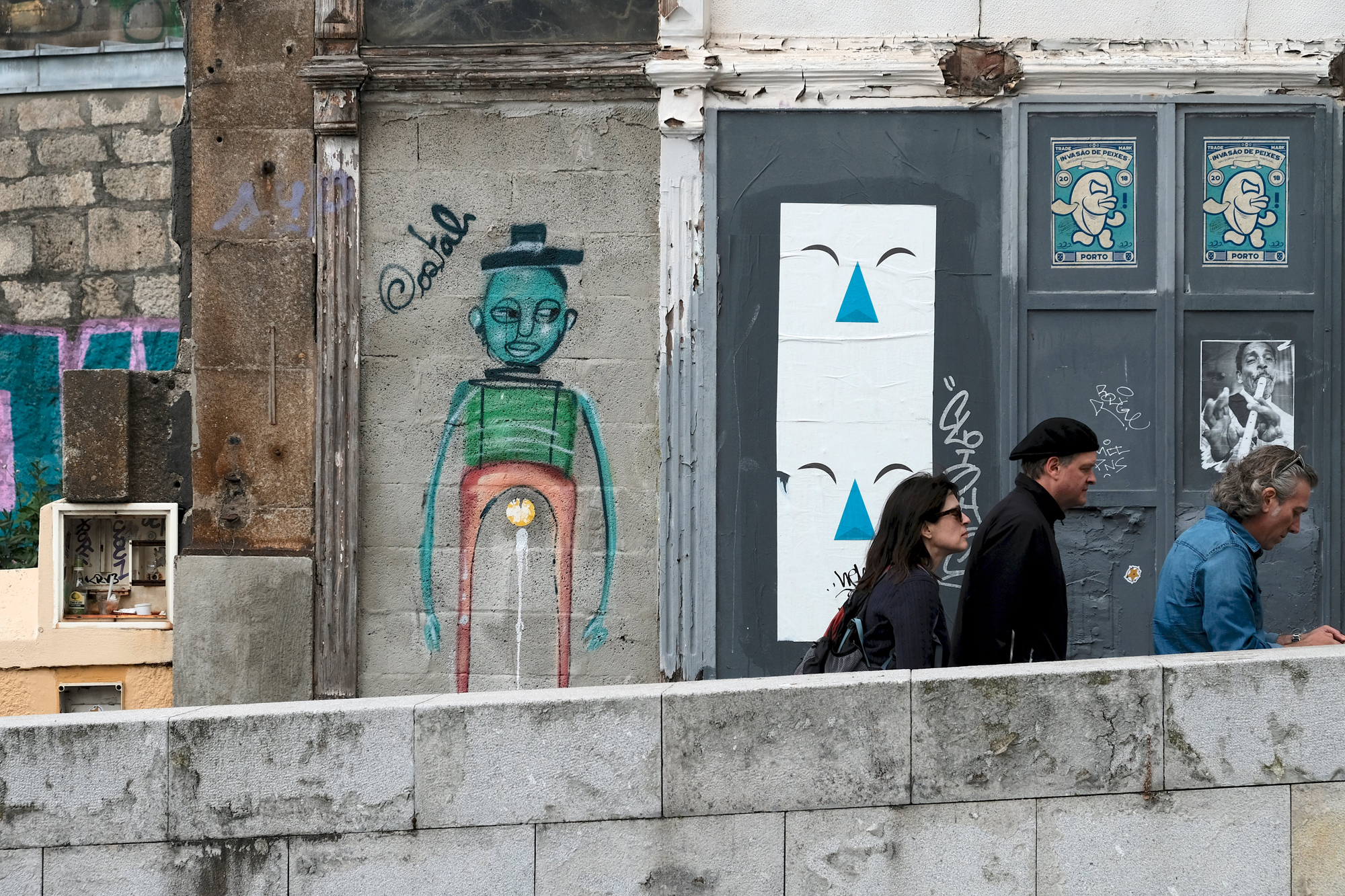
I often find myself now looking for “natural pairings” of pictures when I’m out shooting, thinking about how they will look together on the pages of a book. Sometimes it’s obvious like these photos on the yellow crossing in Hong Kong.
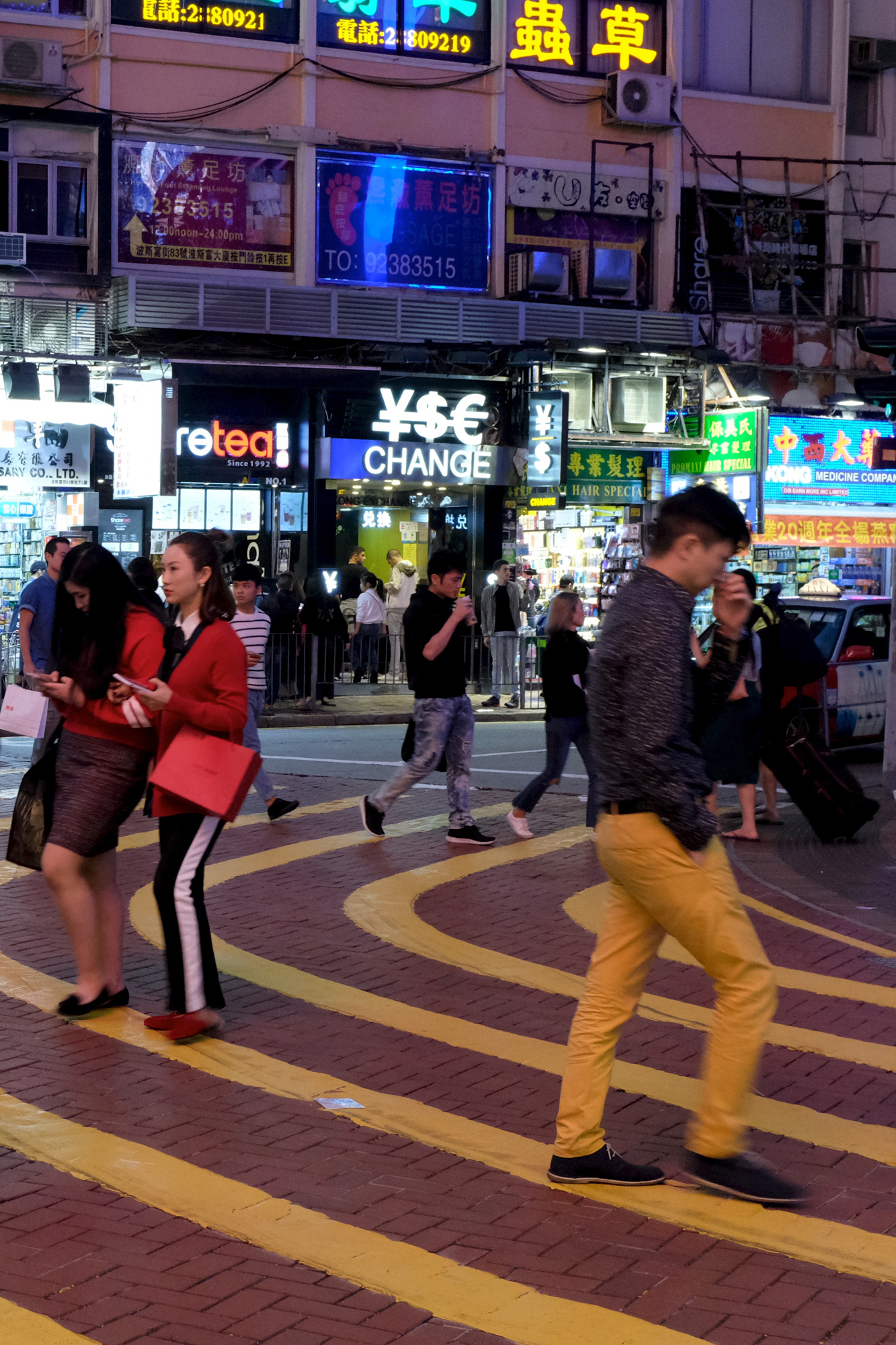
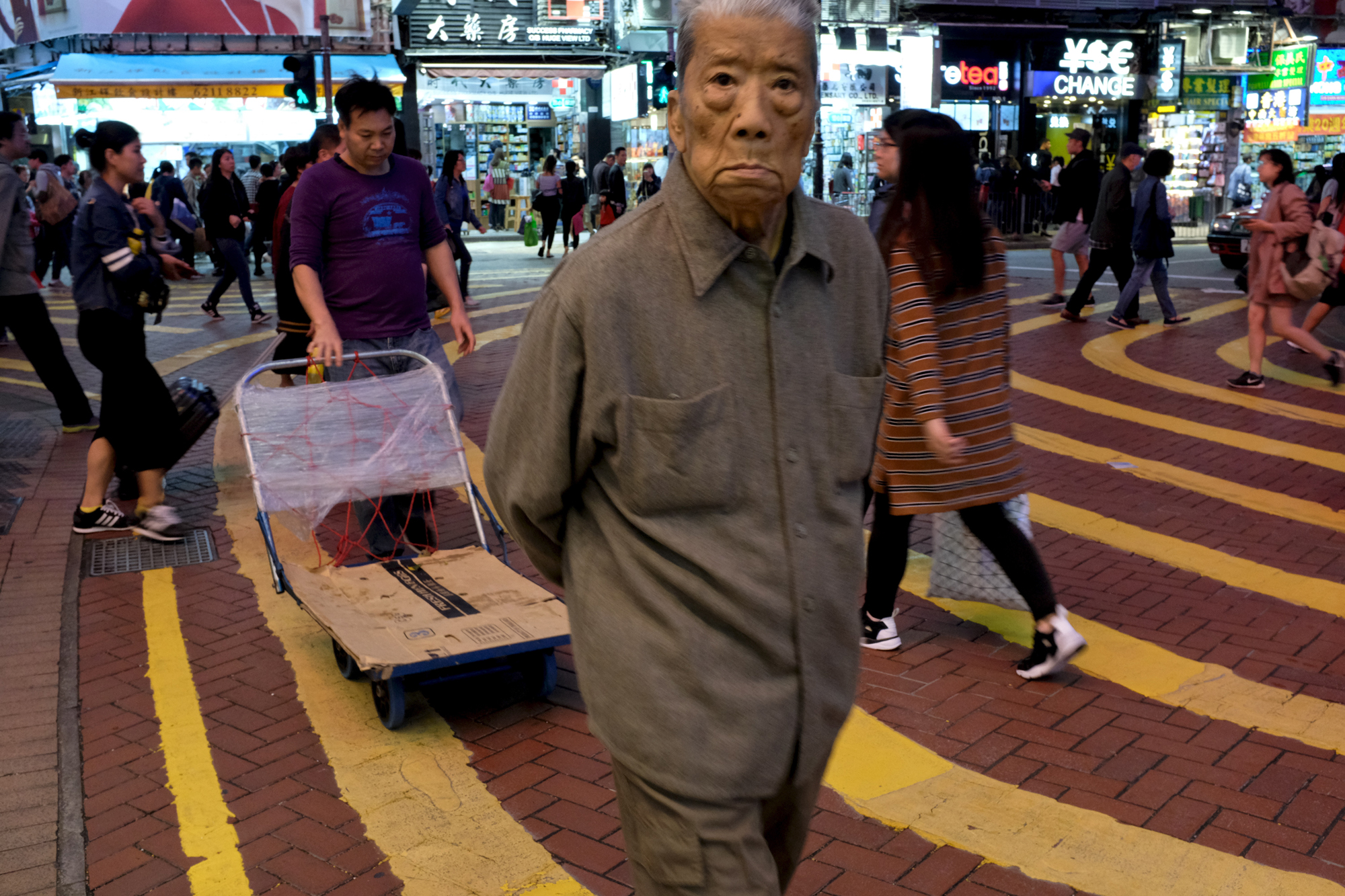
Sometimes you just get lucky like these two photos taken in Liverpool. I’d taken the picture of the man walking past the bus shelter first and then a few moments later I noticed the shadow of the iron railing which sparked a connection in mind. After a while, spotting natural compositional parings when shooting becomes instinctive. Converting to black and white and placing them side by side (with the subjects facing outwards) in the book makes the compositional elements stronger.
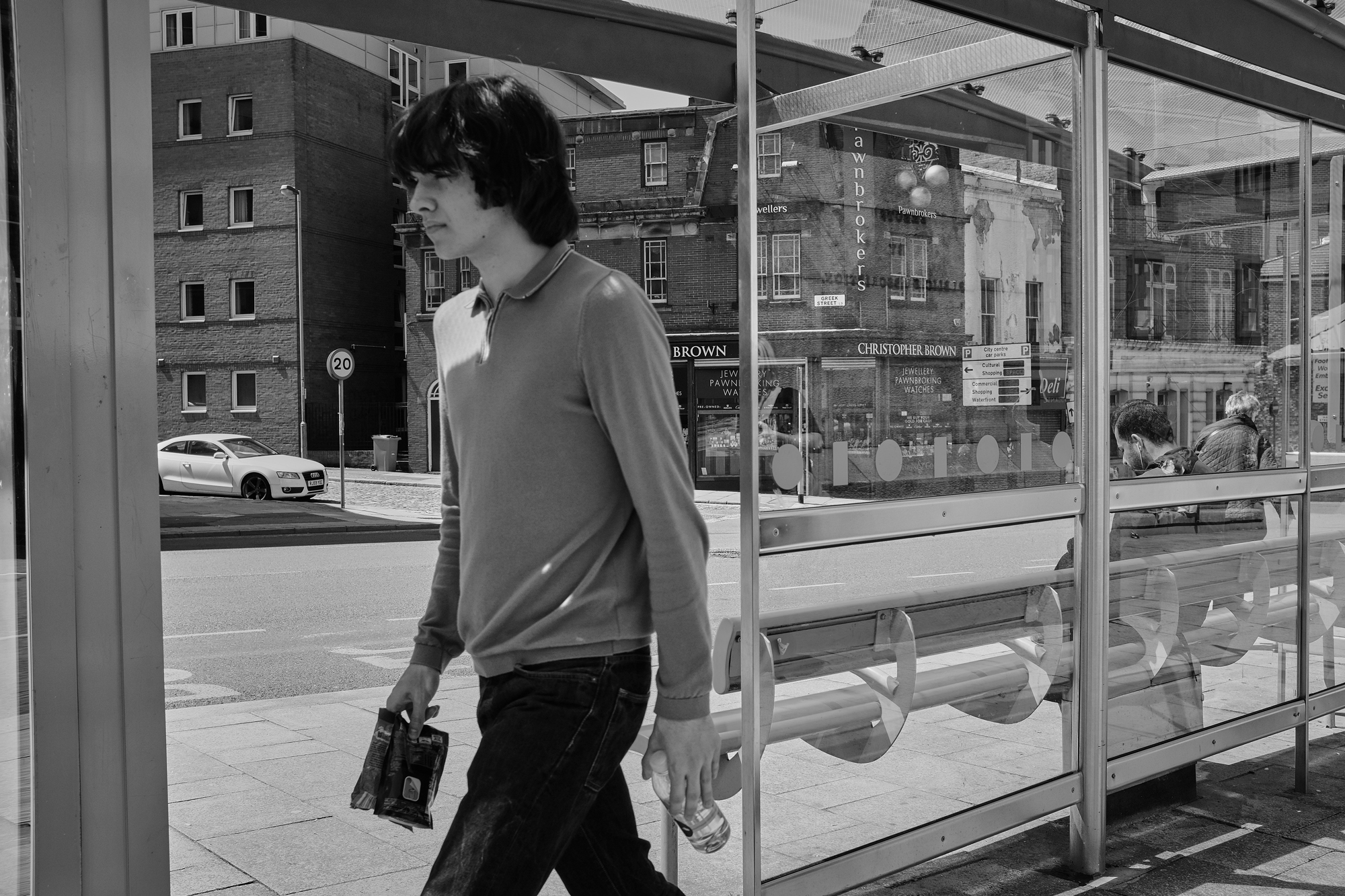
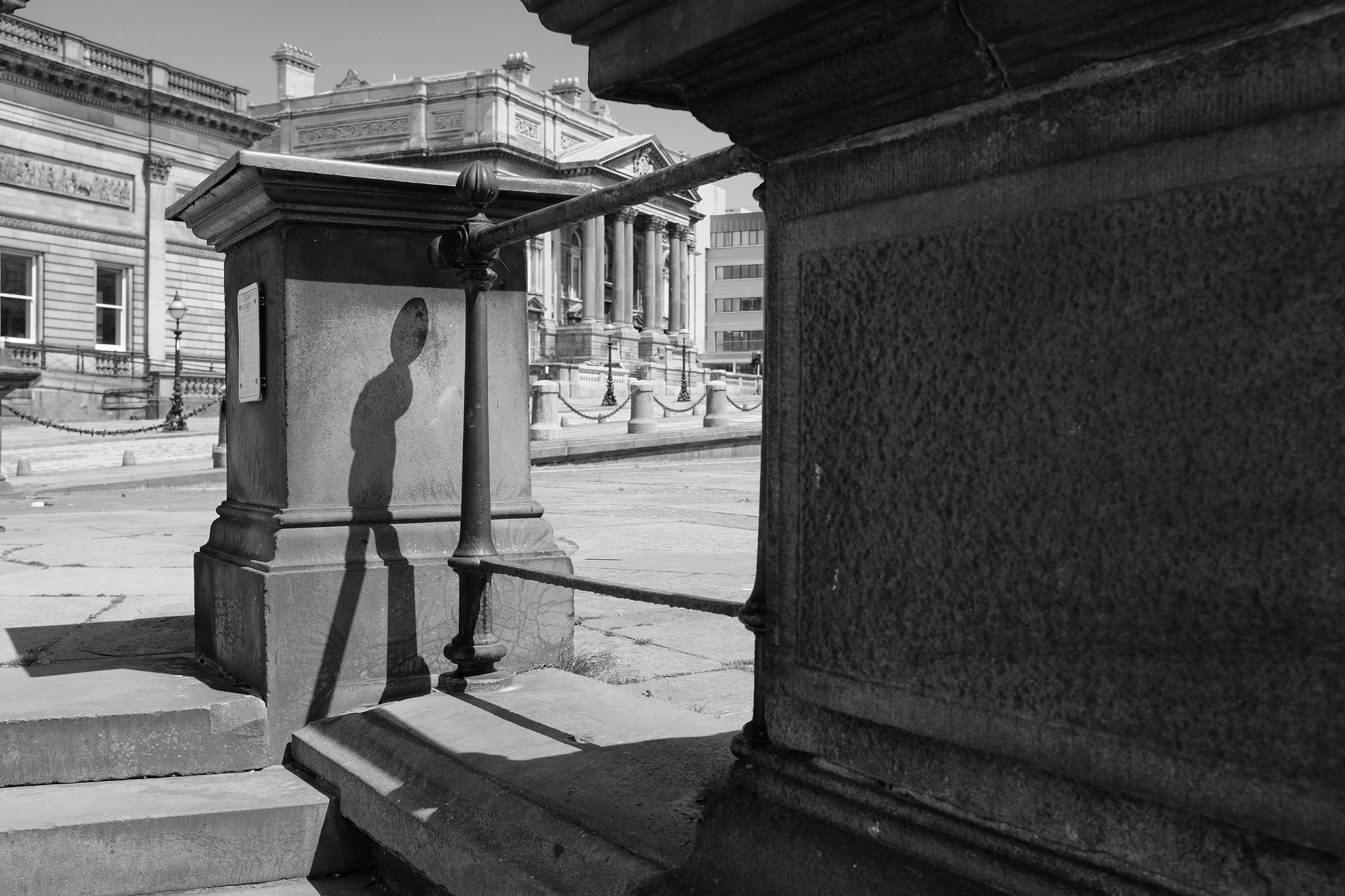
I like putting the subject at or towards the edge of the frame. Although it breaks one of the conventional rules, I like the effect. In my mind it gives the picture a more fleeting feel. Maybe I’m doing this subliminally to counteract my naturally more formal style.
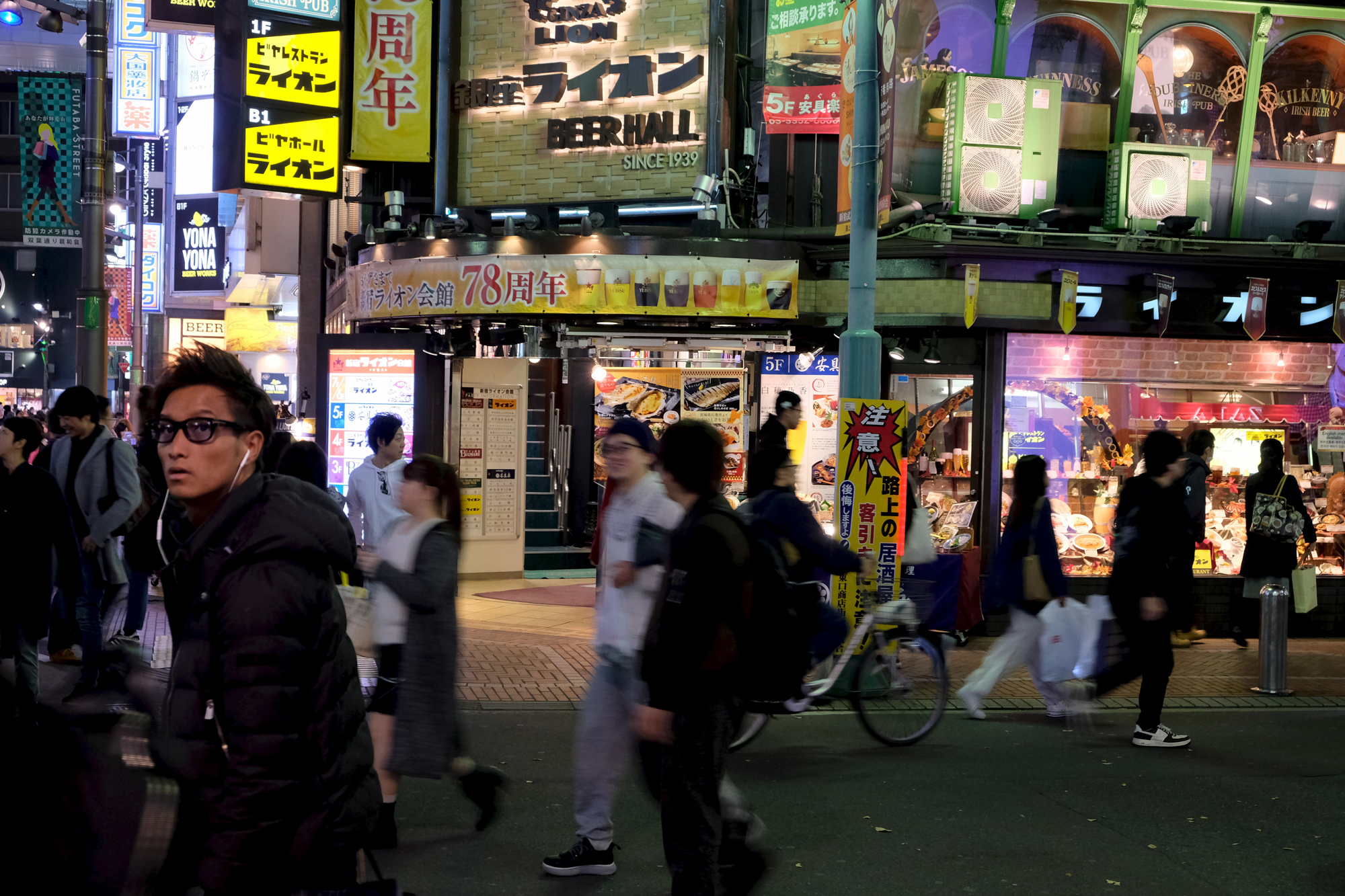
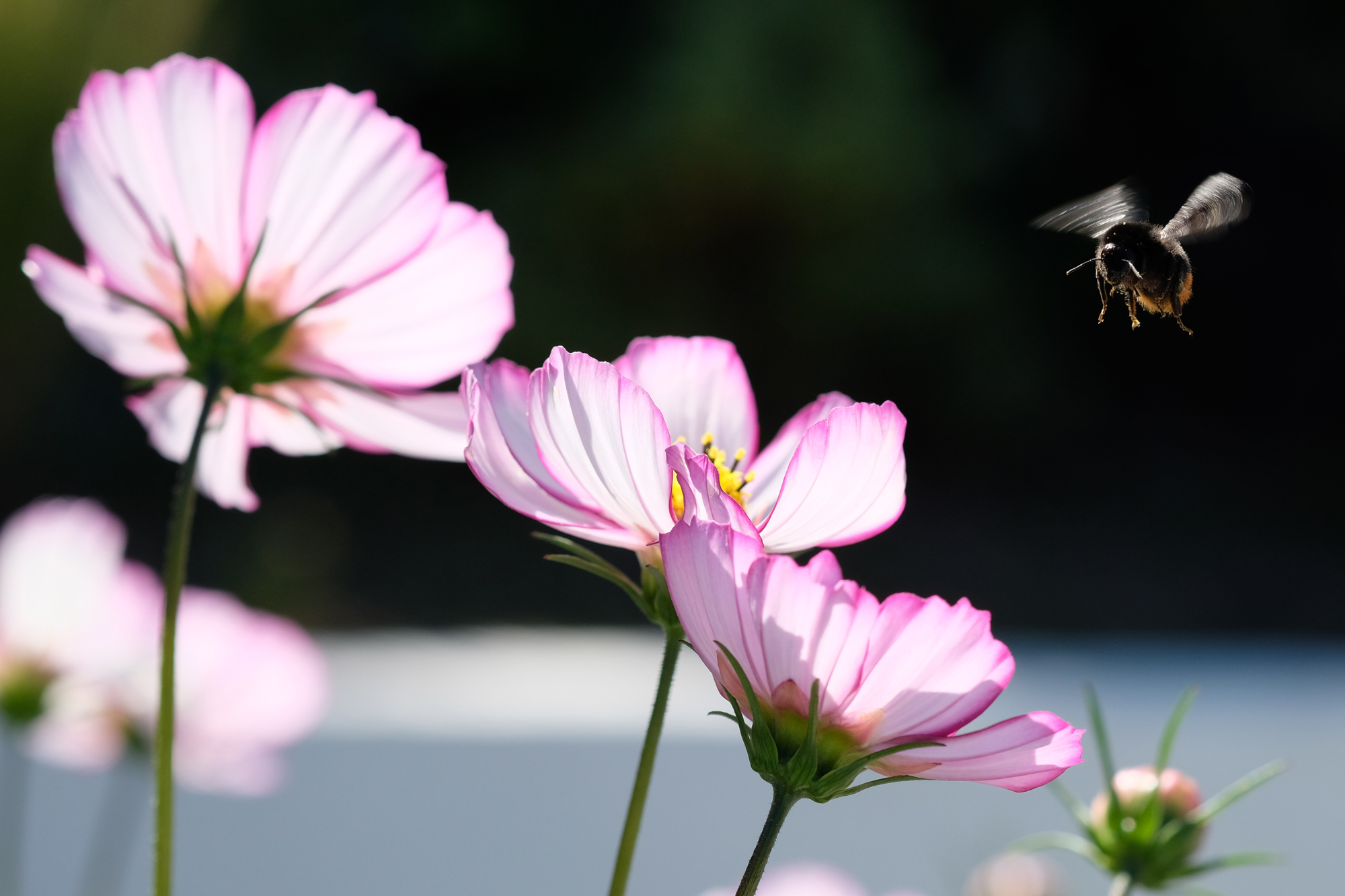
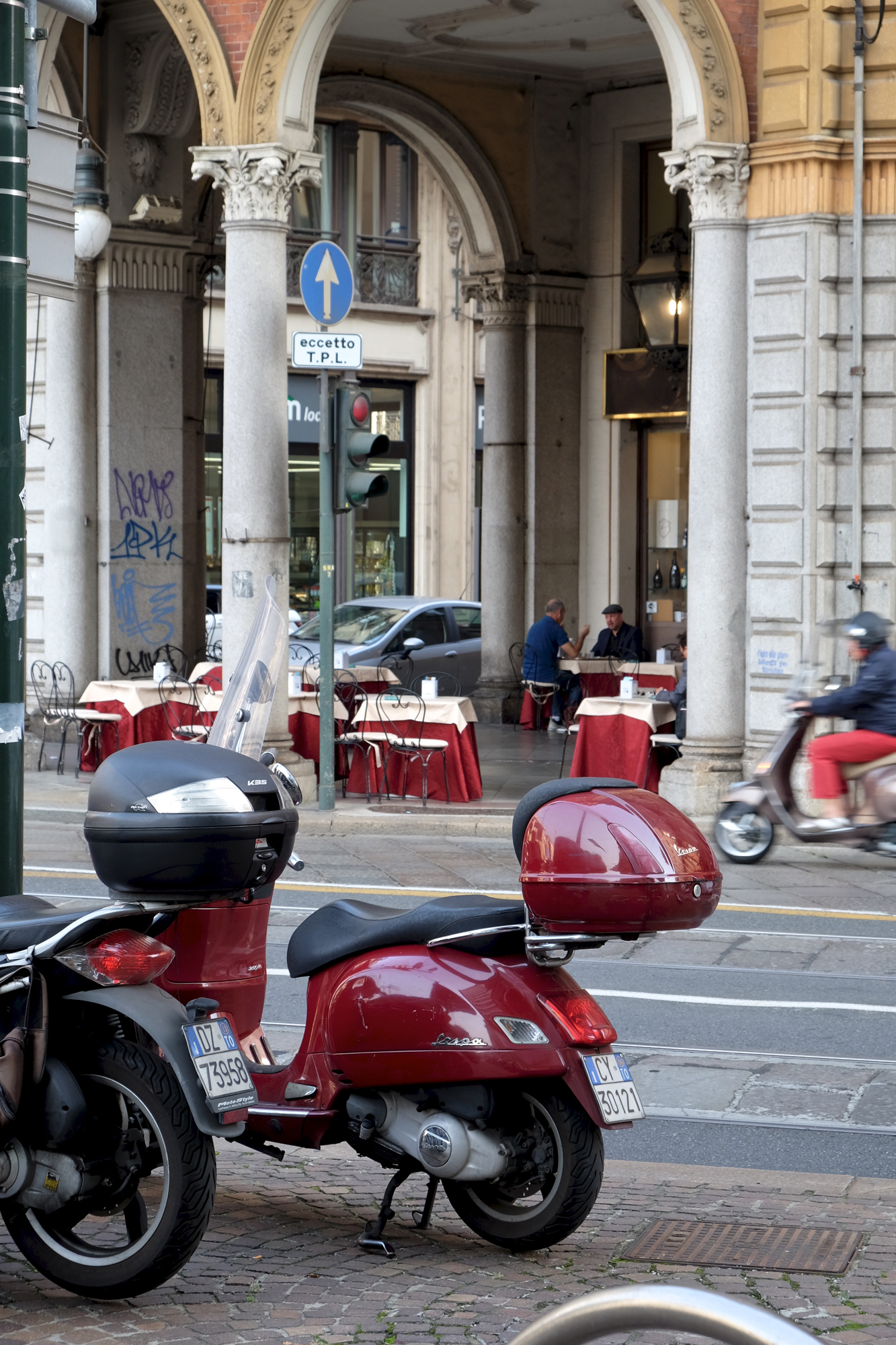
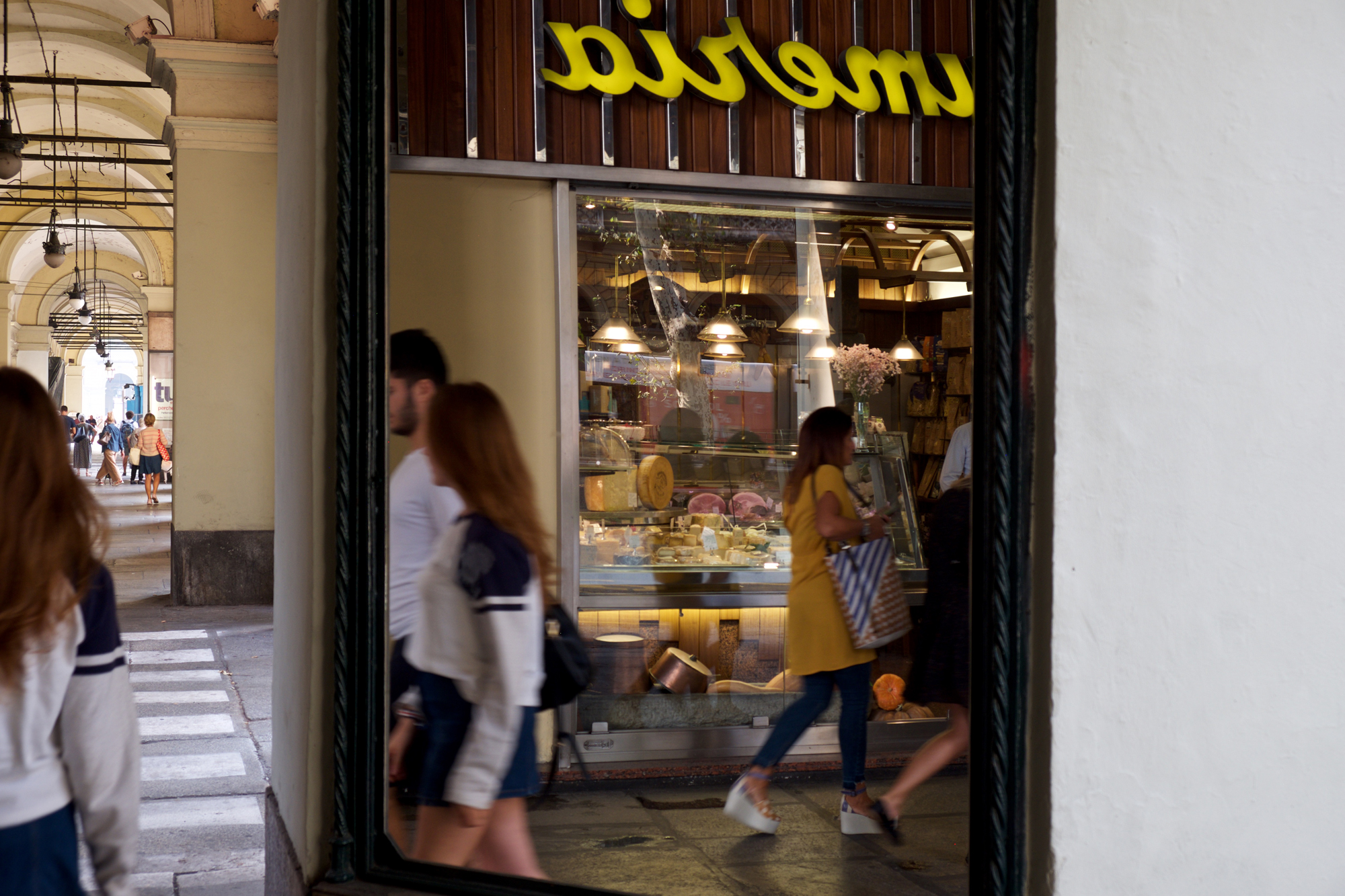
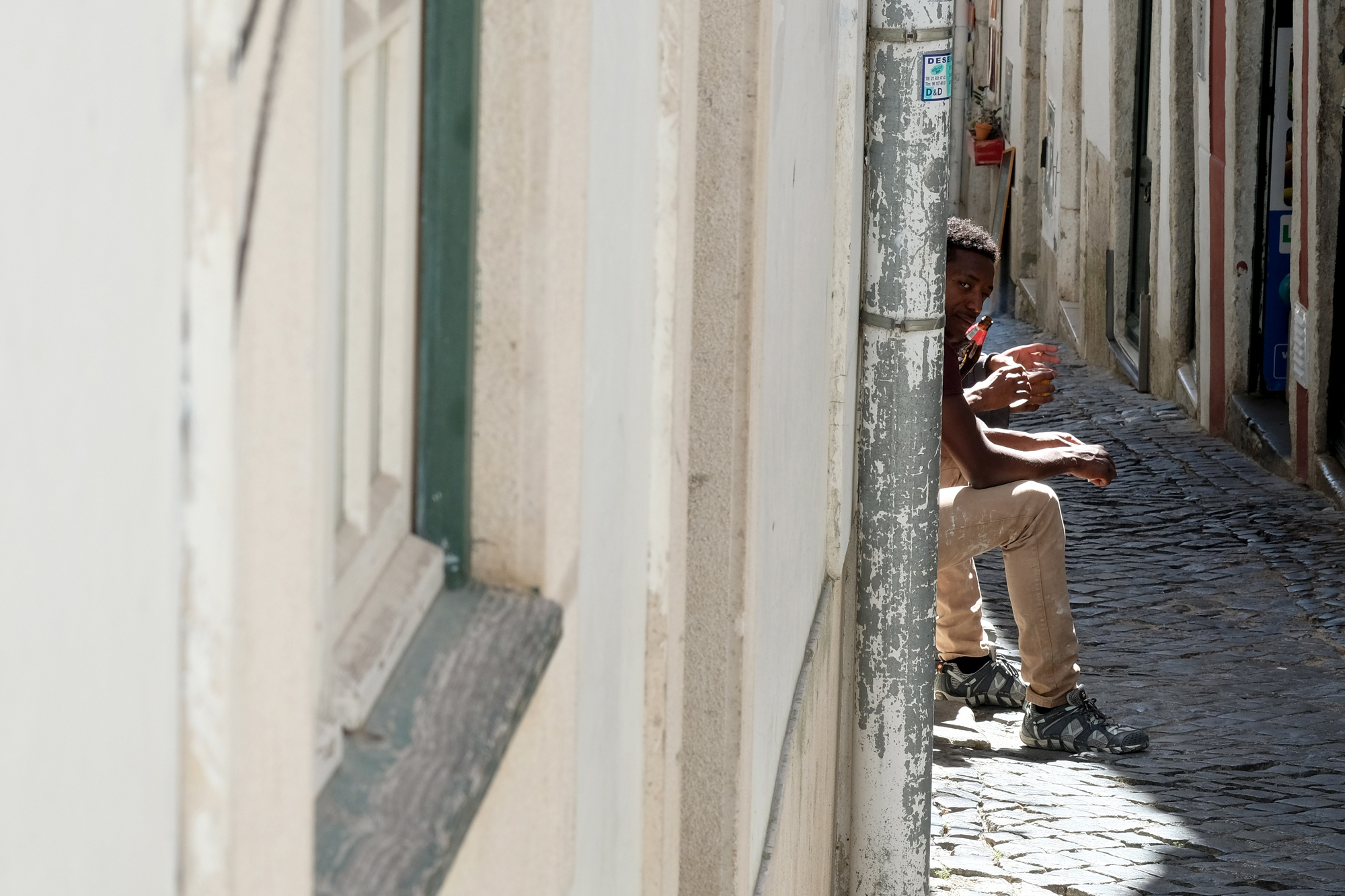
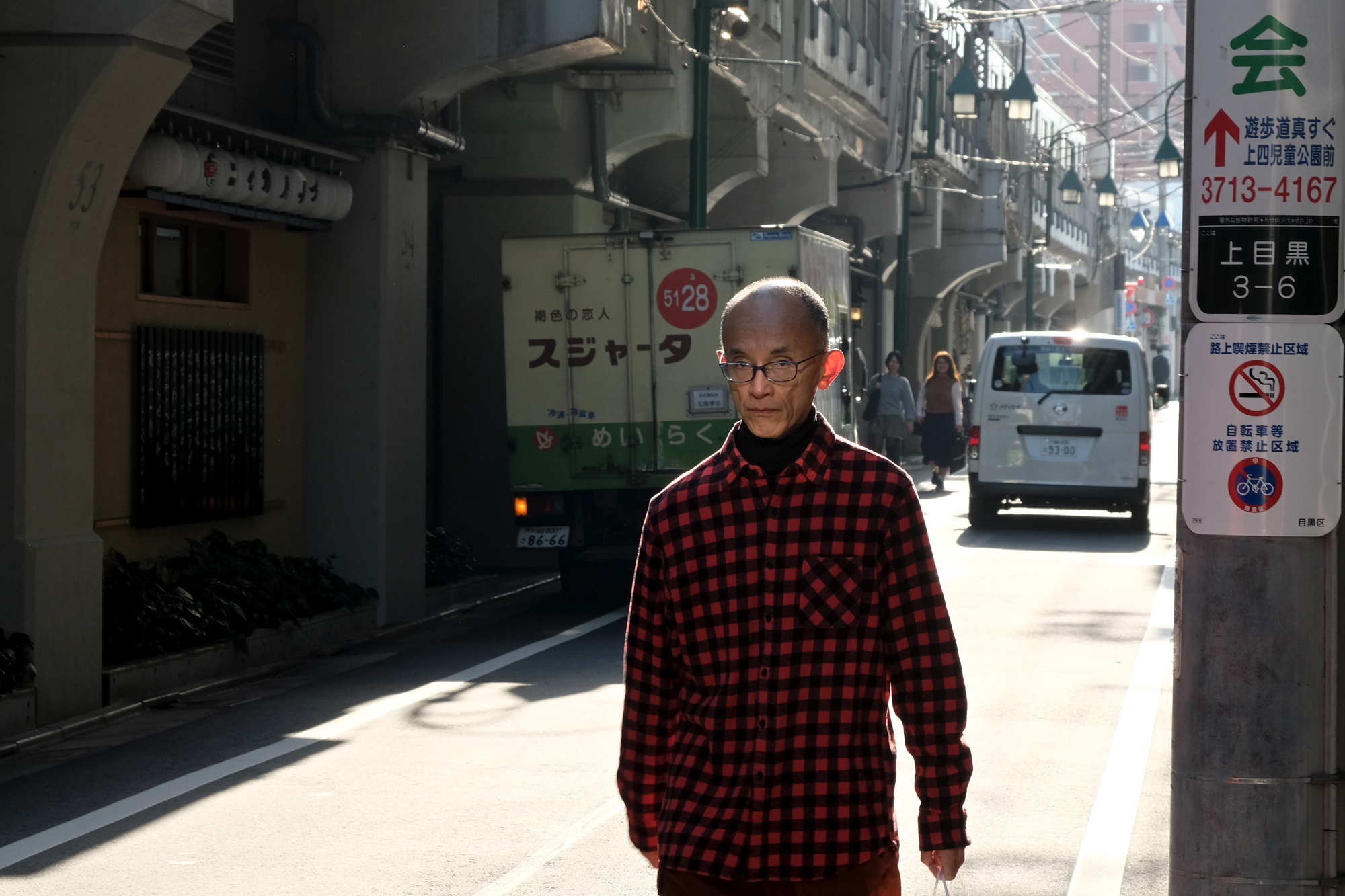
Deciding how much and where to crop on the right-hand edge was critical to this composition. I resisted the temptation to crop close into the man’s face as the street and notices on the post were important parts of the scene in my memory of this part of Tokyo.
Sometimes there are fortuitous circumstances, like these two instances in Tokyo. I was concentrating on the lady coming towards me on the bicycle; I had no idea the young man on the right was going to step out into the frame just as I pressed the shutter and make the picture for me. The lady managed to miss him.
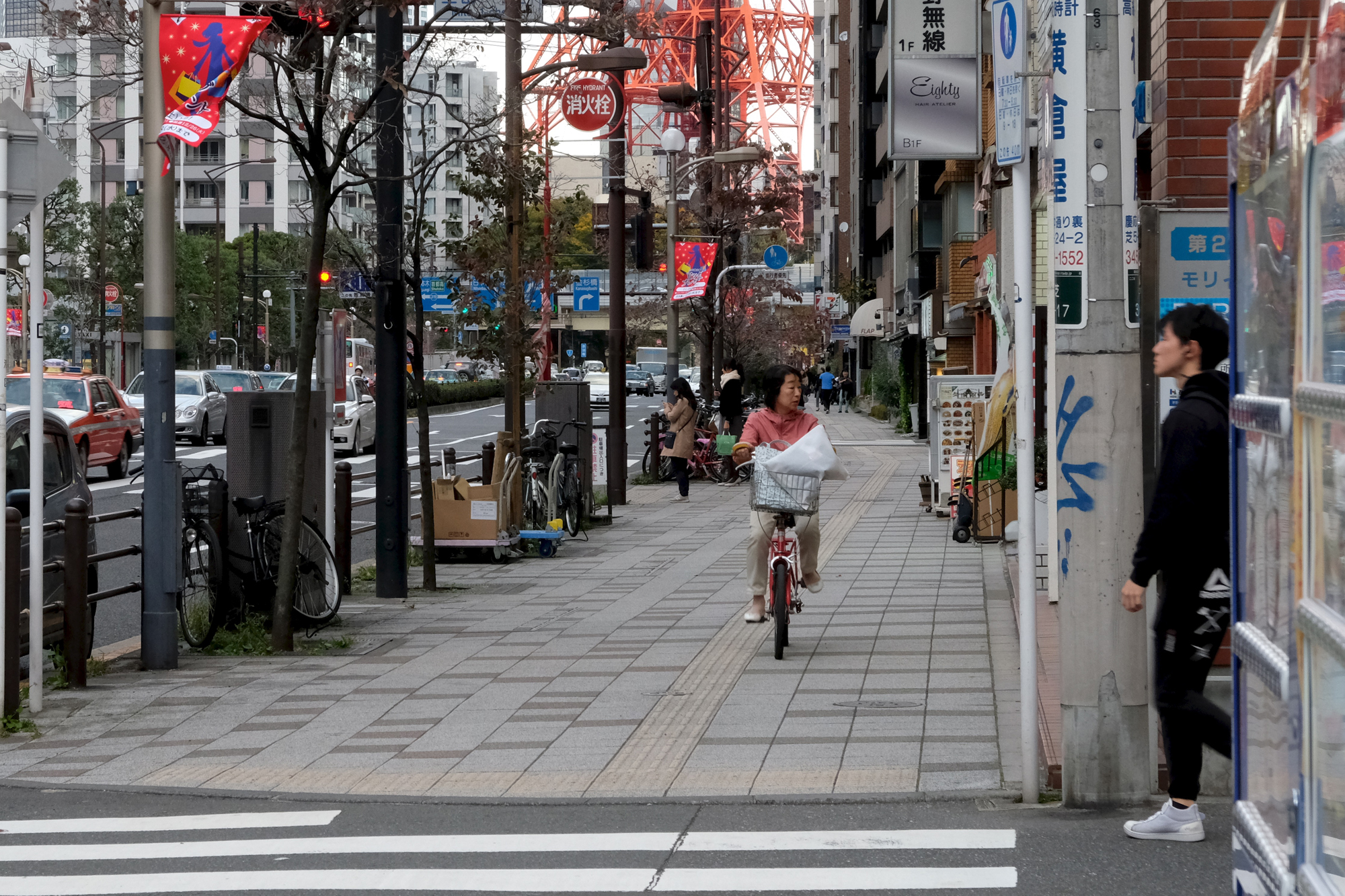
Similarly, the young man sticking his head around the corner was invisible when I was shooting. I was trying to capture the man on the bike – who’s actually slightly out of focus as well as blurred. The pedestrian who is perfectly sharp and echoes the cyclist’s profile saves the photo. Luck rather than judgement! The picture works in the context of the book, it wouldn’t be strong enough on its own. Making photobooks has made me much more aware of how to use individual photos. Both these pictures are important elements in my Tokyo photo story.
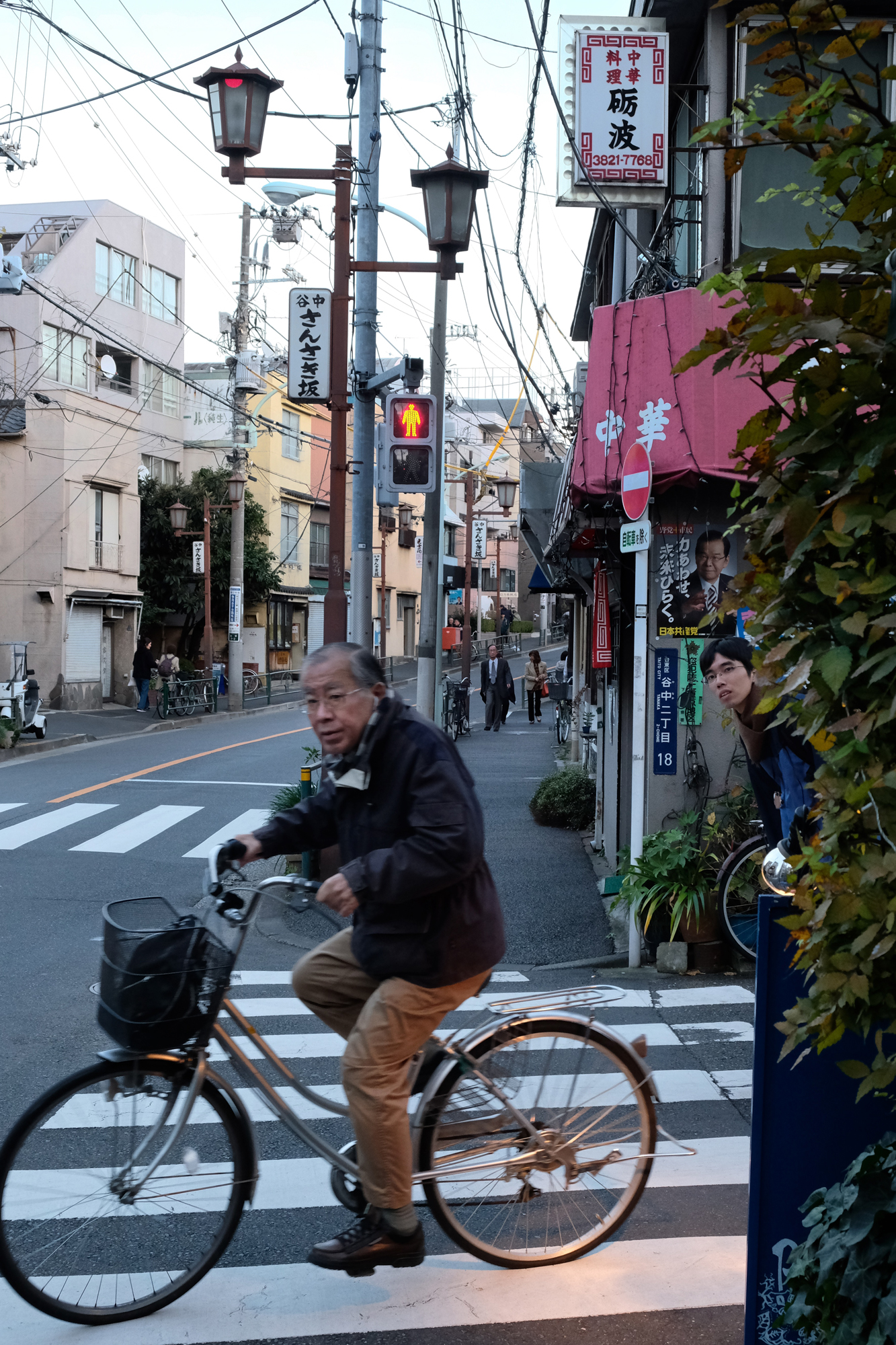
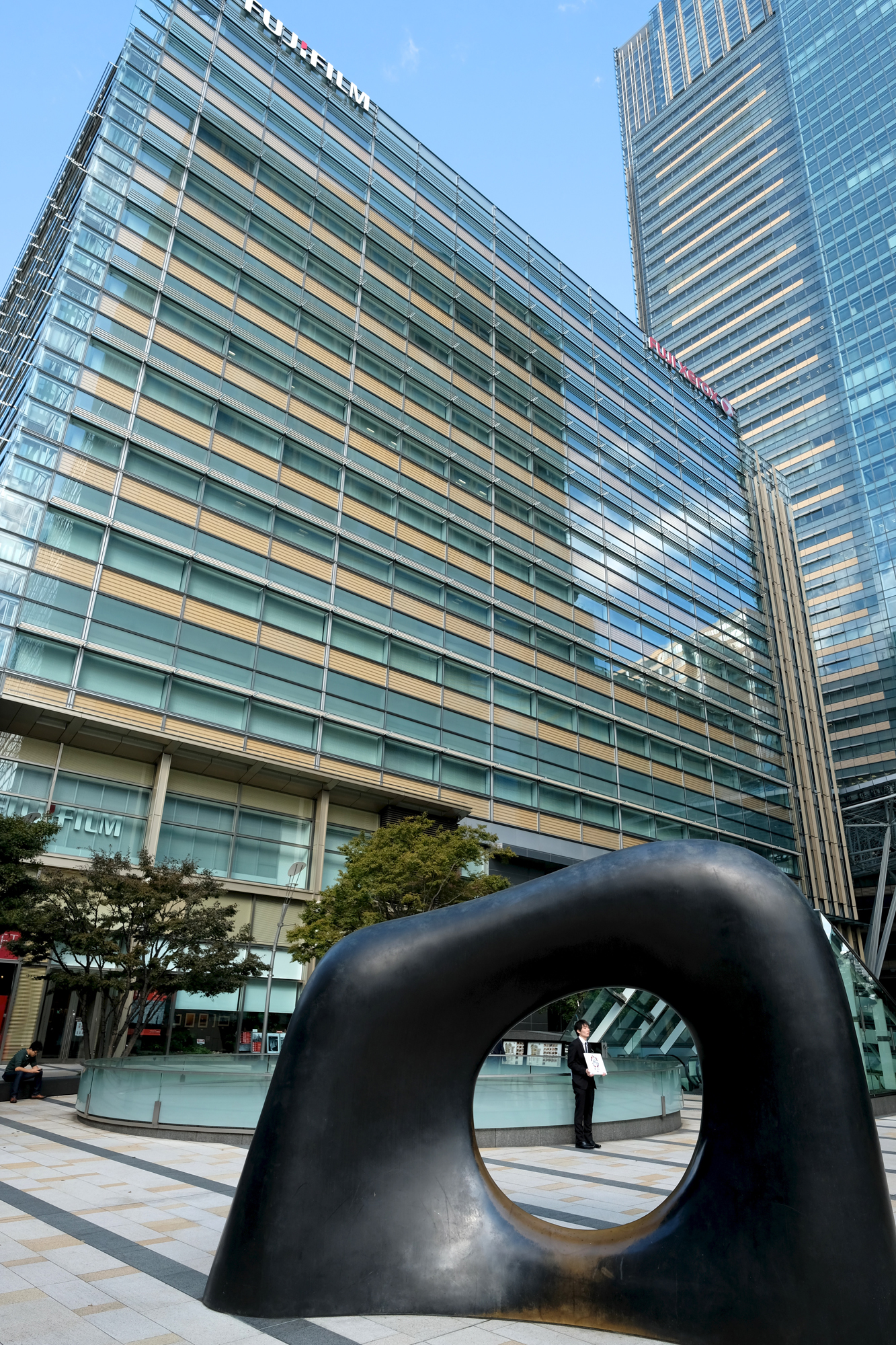
When I was in Tokyo, I just had to visit Fujifilm Square in the Midtown complex. It’s Fujifilm’s HQ and they have a little museum, gallery and product display shop open to the public. Homage duly paid to the Fujifilm God of Light.
My recent photobooks have been ordered from Cewe Photoworld. I have no connection with them other than as a customer. Here in the UK I have found their quality and service are excellent.
Studio Photography
I’ve listened to music and hi-fi as long as I’ve been taking photographs. In that time, recorded music has been replayed on records, tapes, AM/FM radio and digitally through CD, DAB, MP3 players and many forms of internet and home streaming. There are so many similarities with the development of cameras and photography. In my professional life I was immersed in automotive design. My area was product marketing and I worked alongside the engineers and designers for over 30 years. I love industrial design as much as I do art, photography and music. The machines we use to move, take photographs and listen to music with are as fascinating to me as the travel, images and sounds they make happen.
Recently I have been helping a new British hi-fi company called Stack Audio and teaching myself studio product photography in the process. Stack Audio is owned by Theo Stack who has become a friend. He takes pride in high quality design, engineering and manufacturing here in the UK. The images of the products for the website, dealers and the press need to reflect that. I was keen to help, and it has given me a new challenge.
Stack Audio makes upgrades for a classic record turntable called the Linn Sondek LP12. This is a suspended sub-chassis design that has been around since the 1970s and is still in production. There have been over 100,000 LP12s manufactured, the majority from the 1970s and 80s but still being used today. Stack Audio’s LP12 upgrades are called SERENE. They are engineered components that are silver or black, physically flat, and made from steel, aluminium or an acrylic composite. Their primary purpose is to dissipate vibration. Not, on the face of it, the easiest objects to turn into visually arresting images. Trying to do that has taught me more about composition, lighting and colour than I ever knew before.
Stack Audio also makes a digital music streamer called the LINK which has a machined from solid aluminium case, complete with curves, chamfers and engravings that catch highlights. It is anodised in either silver or black. Photographing the LINK in a way that makes the finish look both true to life and visually stunning has been the cause of much creative tension between Theo and me, but in a good way!
Materials, surfaces and forms, the way they reflect and absorb light, are at the heart of this new photographic passion of mine. I have become obsessed with details, absorbed in the subject and learning it inside out without realising it.
I bought my first studio gear last year – a cheap continuous LED lighting kit. I quickly learnt controlling reflections on gloss black acrylic and brushed stainless-steel was a big problem. I tried a tent but settled on using an open set with a white vinyl backdrop in my lounge that fortunately has a perfectly smooth white ceiling. An LED spotlight, folding camping tables, inexpensive lighting stands, two existing tripods and an assortment of clips, Blu Tack and props were gradually added to the ‘studio’. As it is in my living space, it has to be easily set up and packed away.
I use the Fuji XPro2 and XF35 1.4 lens for virtually all of the product shots. If I need a wider angle (for example when shooting the direct overhead shots of a complete turntable) I use the XF23 2.0. For close-ups of small items, I use the XF60 2.4. The XF35 1.4 and XF60 2.4 along with the XF14 2.8 (although not for product photography) are my favourite Fujifilm X lenses. Along with the XF18-55 they are by far the ones I use the most for all types of photography.
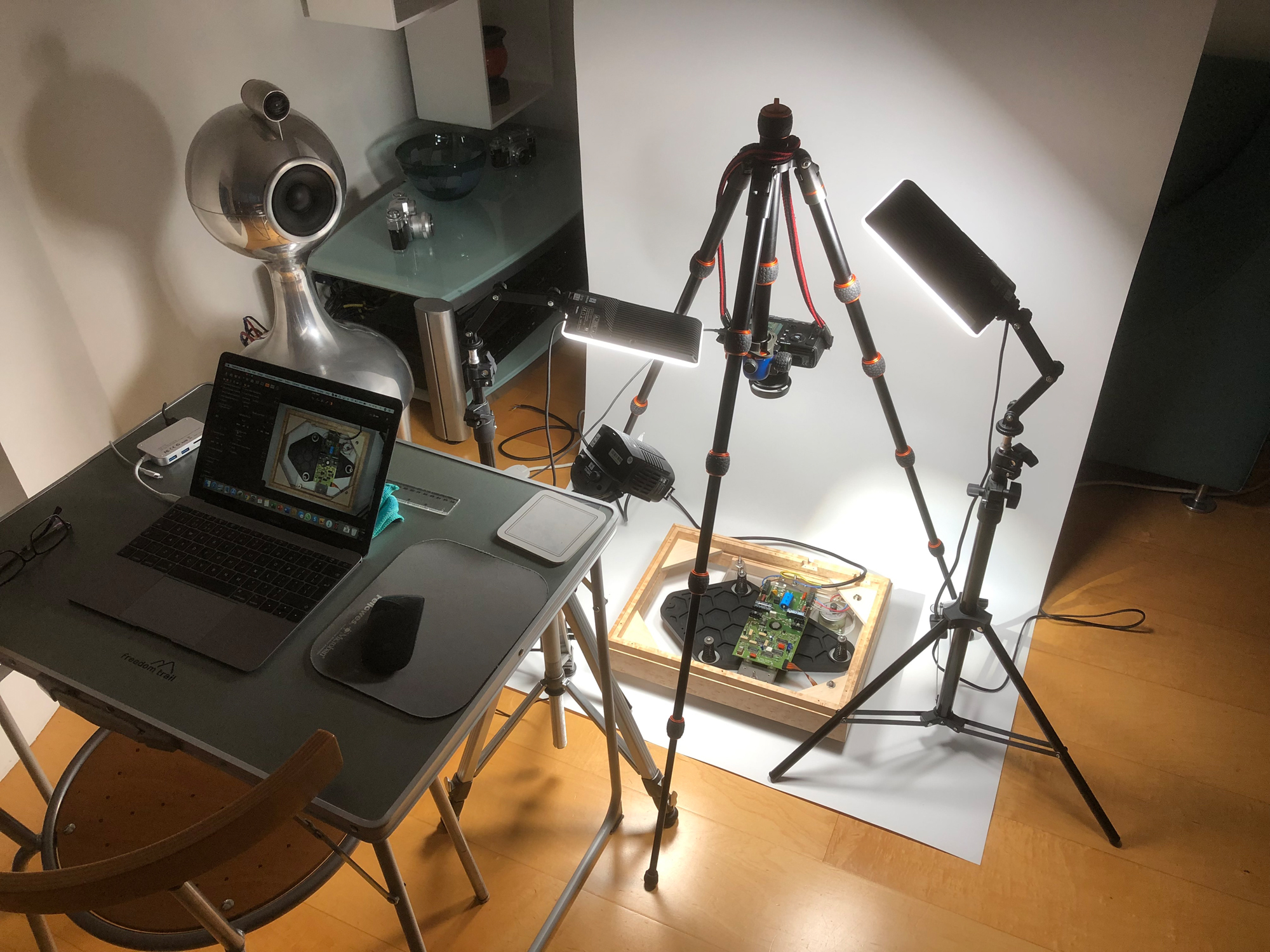
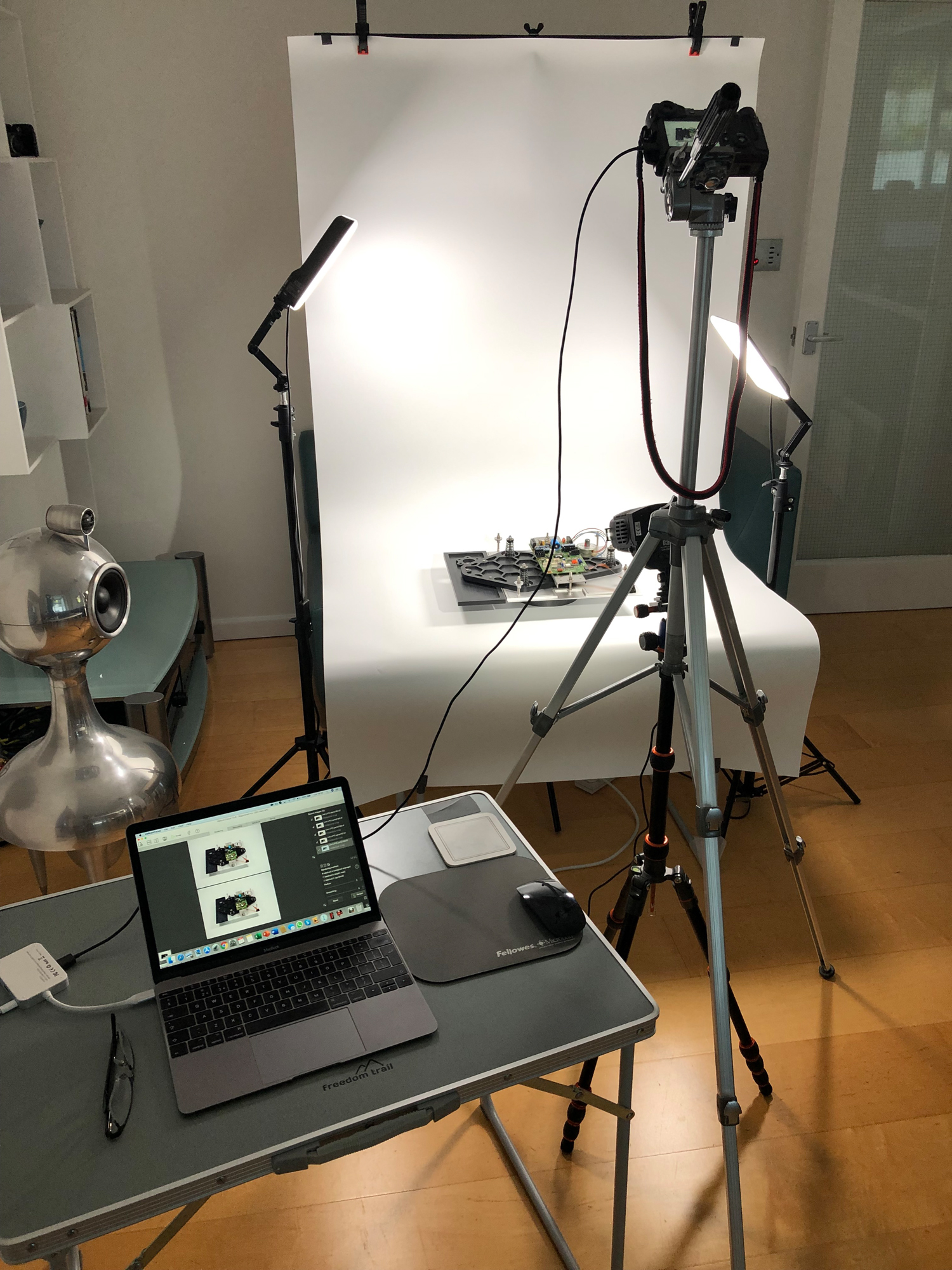
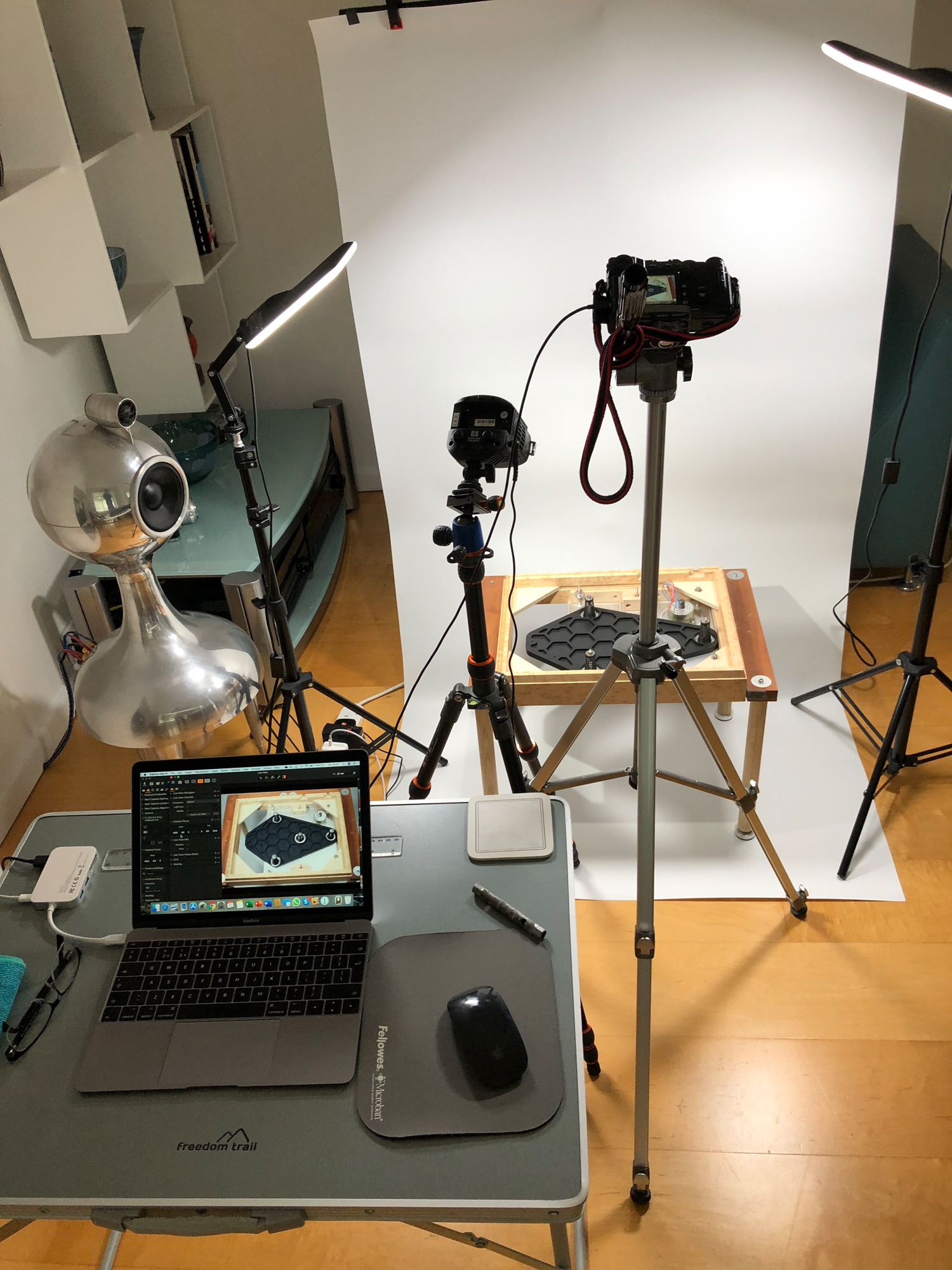
Last year I changed my editing software. I had been using Apple Aperture and Pixelmator. The ending of support for Aperture was the incentive I needed to switch, and I decided to go with Capture One Pro for Fujifilm. This let me shoot tethered for the first time and, with Helicon Focus, I can now do focus stacking. This has transformed both my shooting and post-processing. I wish I had known about it all when I started out! I had a year of trial, error and frustration but in a way that probably helped me understand better what I needed from the new software.
I use Pixelmator Pro to create layers for removing backgrounds, dust spots (always visible no matter how carefully you think you’ve cleaned an object) and creating composite images. One ambition I set myself was to make an ‘exploded LP12’ picture. It took months, but I got there in the end!
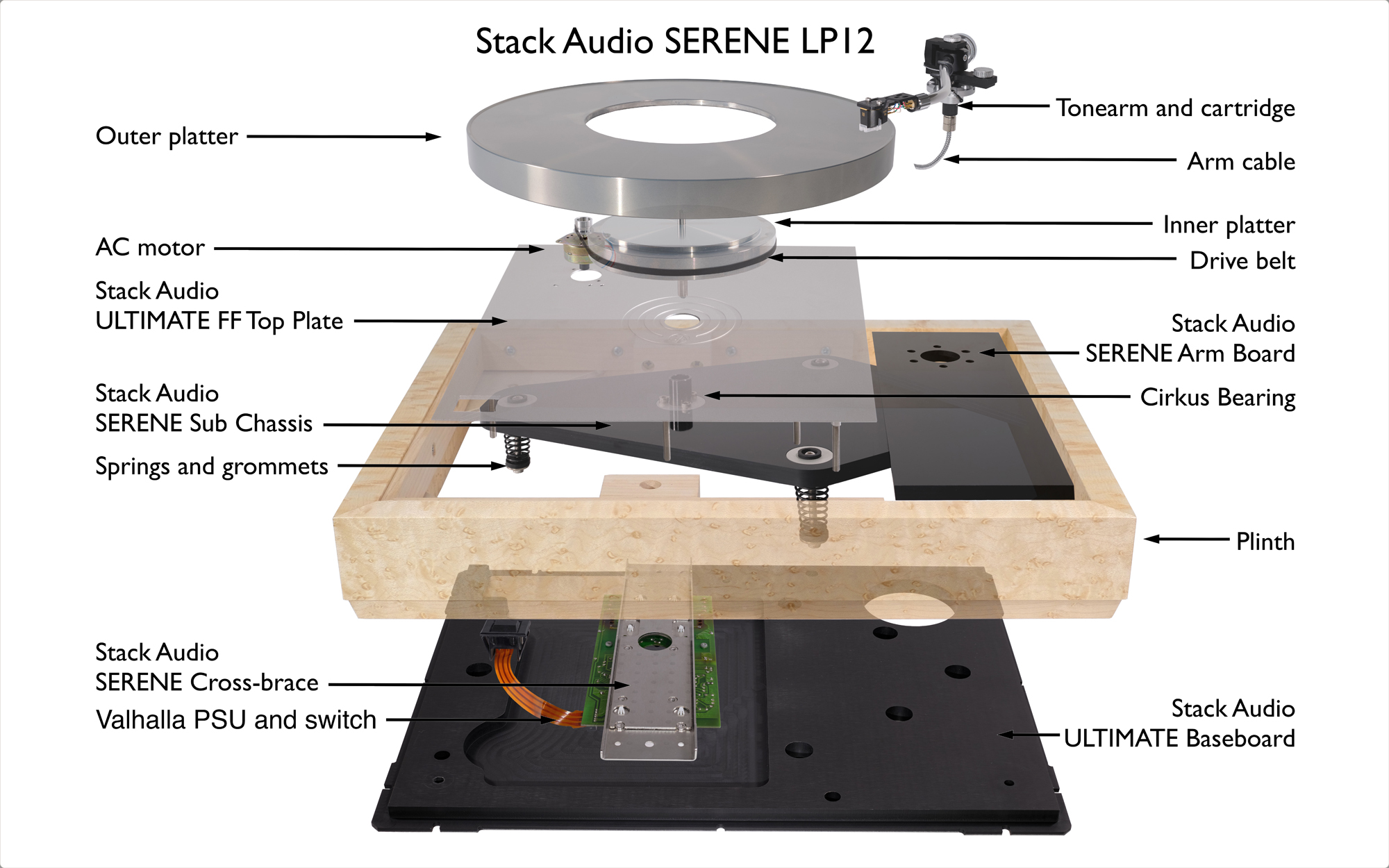
Composite from 9 original images shot with X-Pro 2, XF35 1.4, f5.6, c1/15, ISO 200. Camera tethered and multiple focus stacked images taken using Capture One and Helicon Focus. Layers created and transform/background editing in Pixelmator Pro.
Another shot that was long in the planning was one of the Stack Audio LINK which we called the “mouth shot”. I used a 3D printed prototype of the case to test the set-up, but it was a little harder when I came to do the actual shoot as the case weighs 1kg (it’s machined from solid aluminium). A wooden wedge, Blu Tack and fishing wire between the case and the top of the backdrop stand were all pressed into service. I wanted to shoot this in one go rather than create a composite as I wasn’t confident that I could make it look right and I didn’t have the editing skills at the time. This picture was taken before I switched to Capture One so no focus stacking or tethered shooting, just a lot of trial and error with lighting, camera angles and focus points.

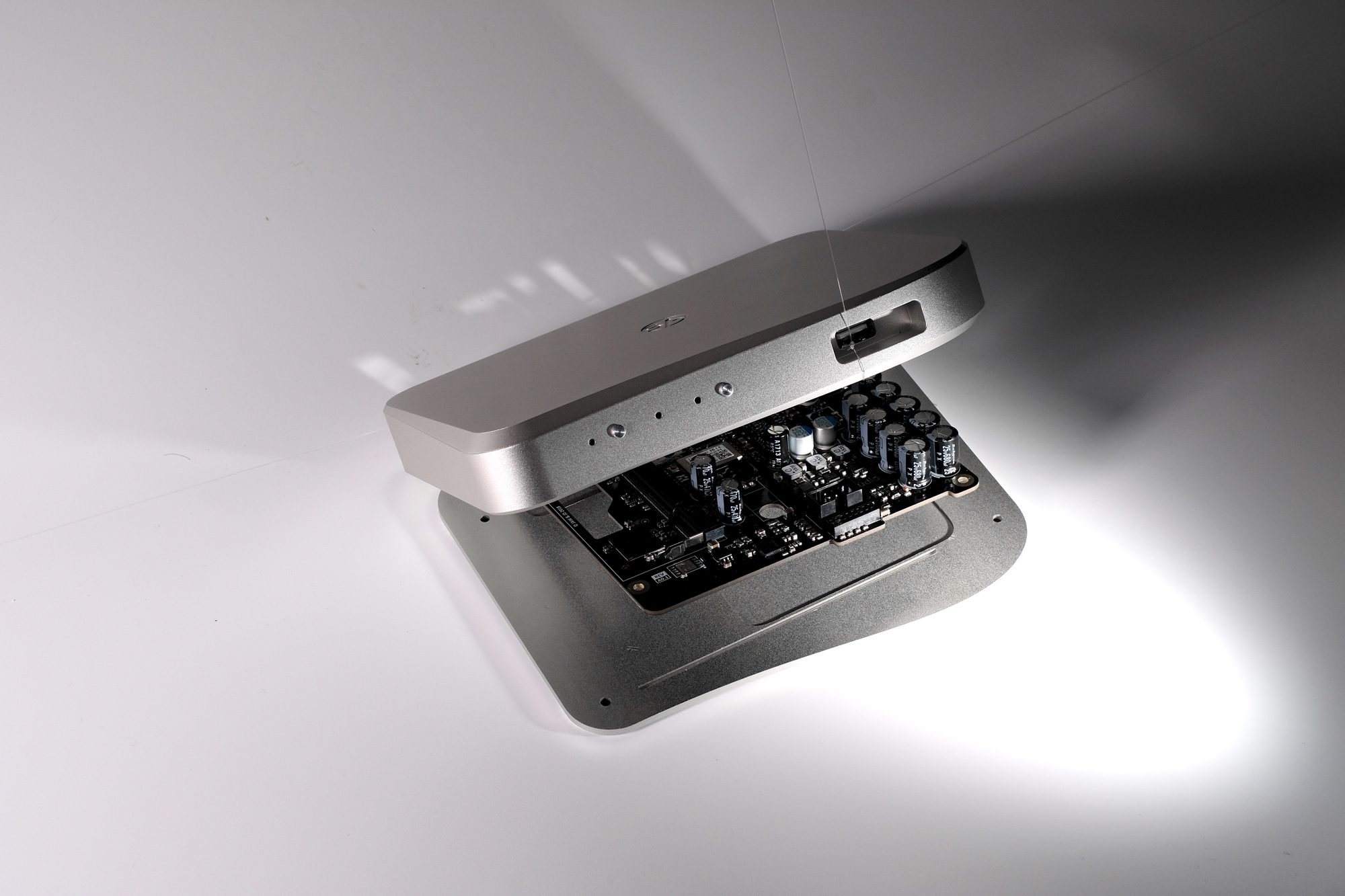
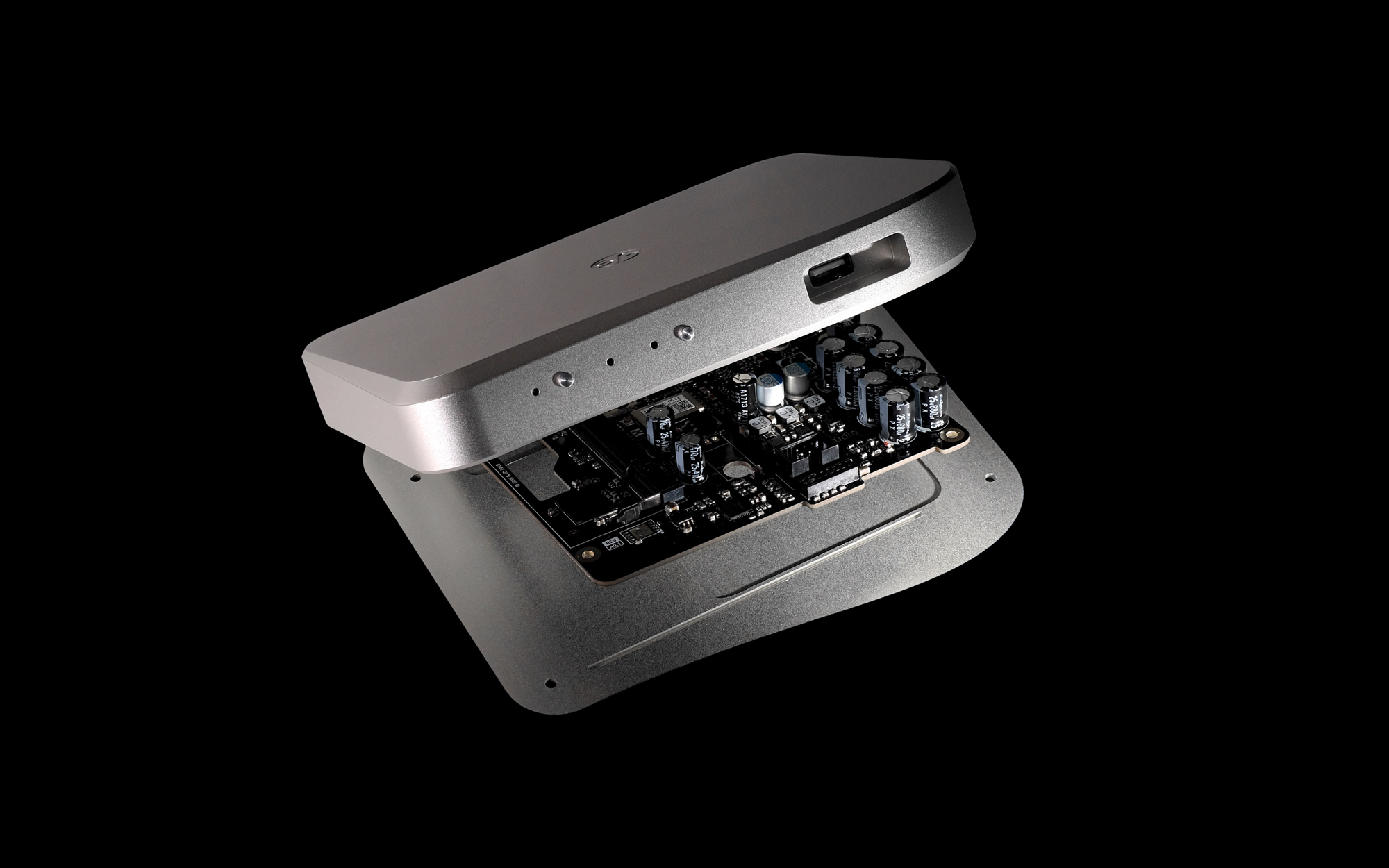
Here is a selection of product photographs taken over the last 2 years. I don’t have a personal website, but you can see more of these at: www.stackaudio.co.uk
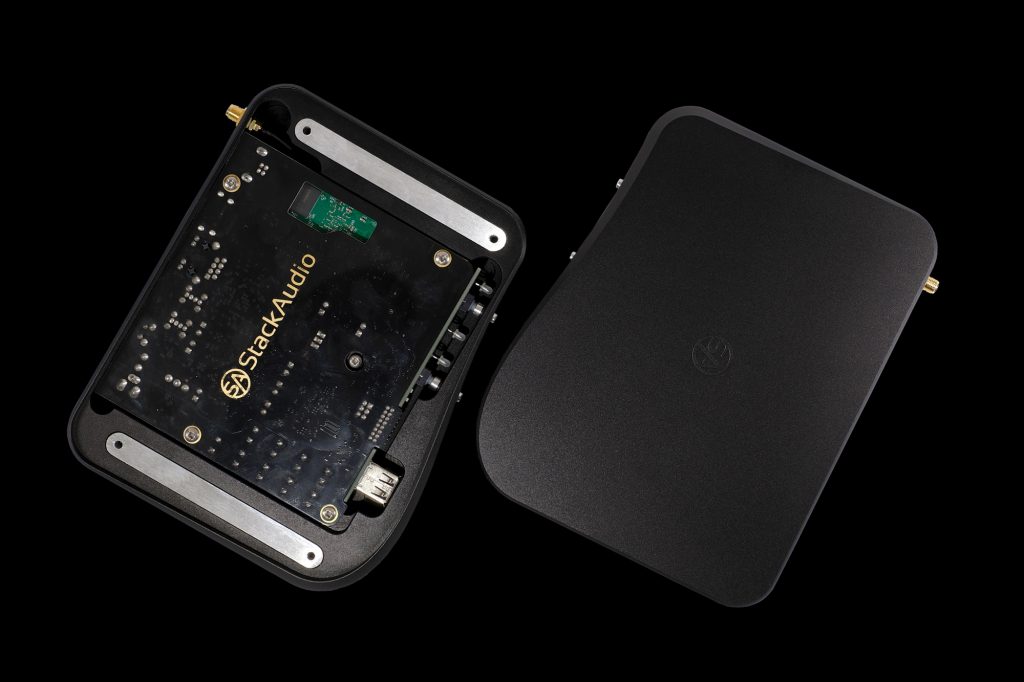
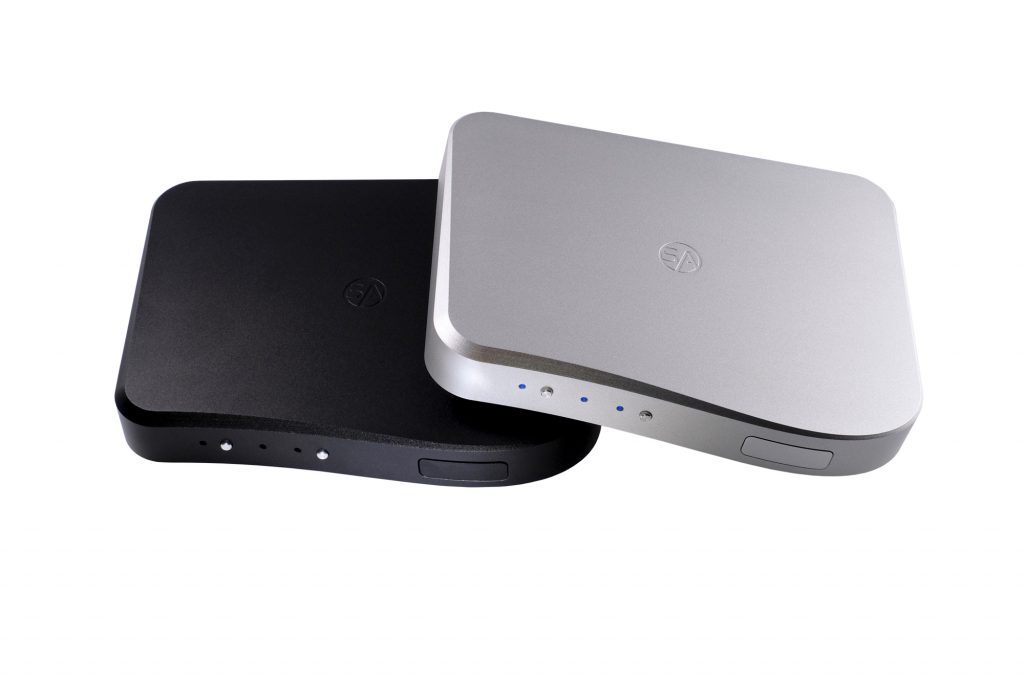
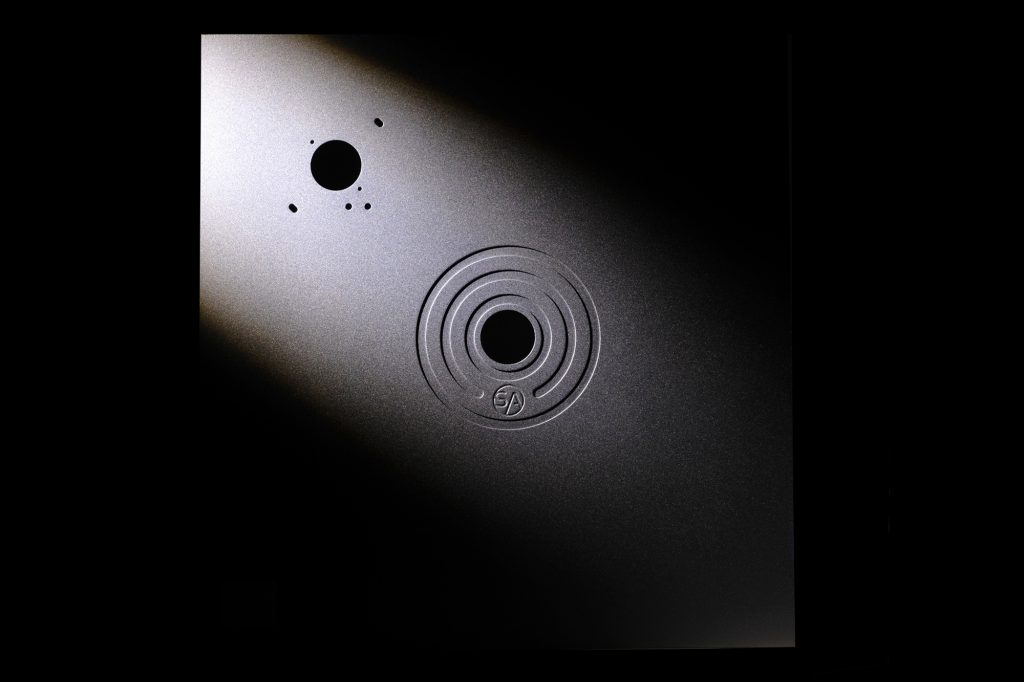
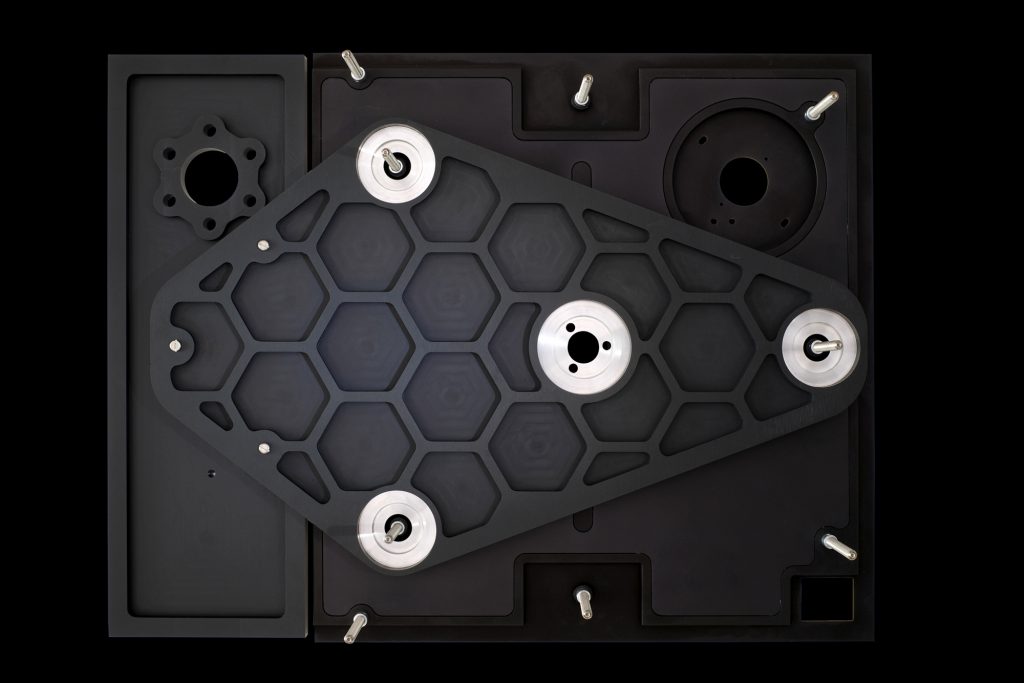
The following pictures have been taken since I switched to Capture One with the camera tethered and multiple images taken at different focal points and combined in Helicon Focus.
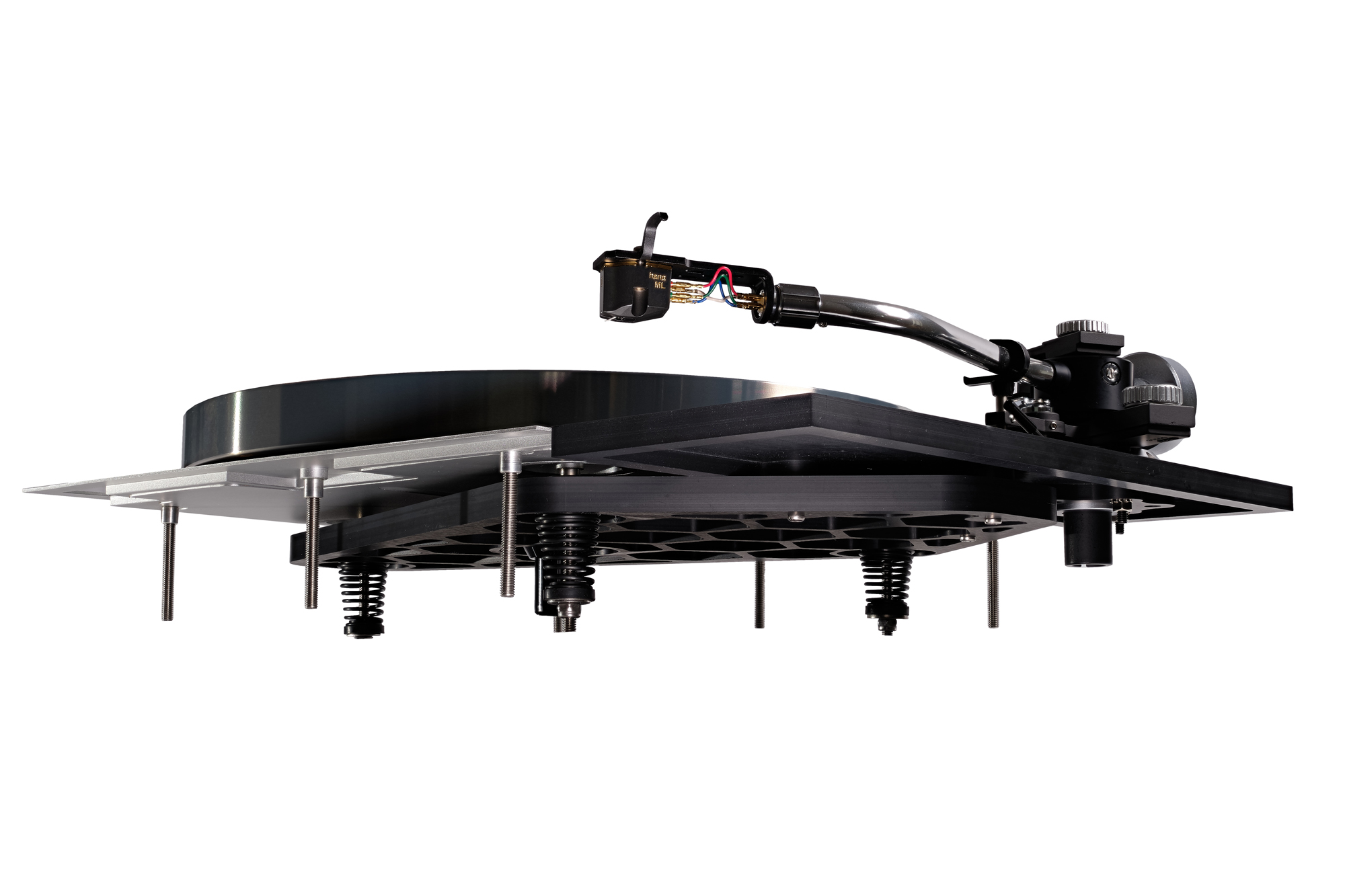
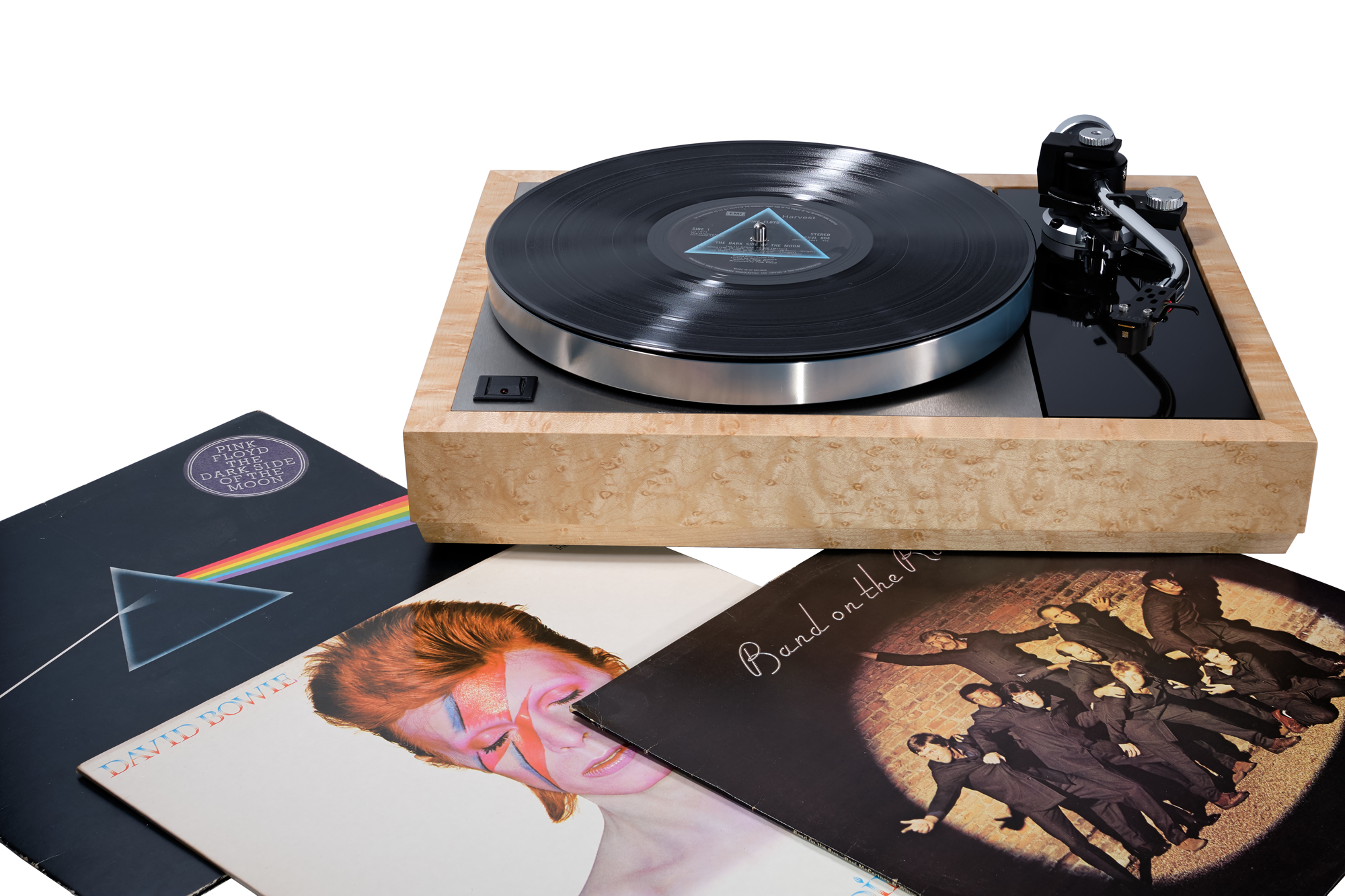
Finally, I’m part of a small group of friends who meet up to eat, drink and talk photography. We call ourselves Point & Shoot and have our own informal monthly competition. Last year a theme was “reflections”. I was practising my studio and editing techniques at the time, so I decided to have a go with this picture. The camera is a Kodak Bantam Special, manufactured in the 1930s. I have been lucky to own it for 30 years. It is a beautiful art deco object that represents everything I find wonderful in product design and engineering. Two images combined, one with the cover open and one closed with the camera sitting on a piece of glass on a black background and held in place with Blu Tack. I didn’t win this time, but the club helps create another “sense of purpose” and that’s what really matters.
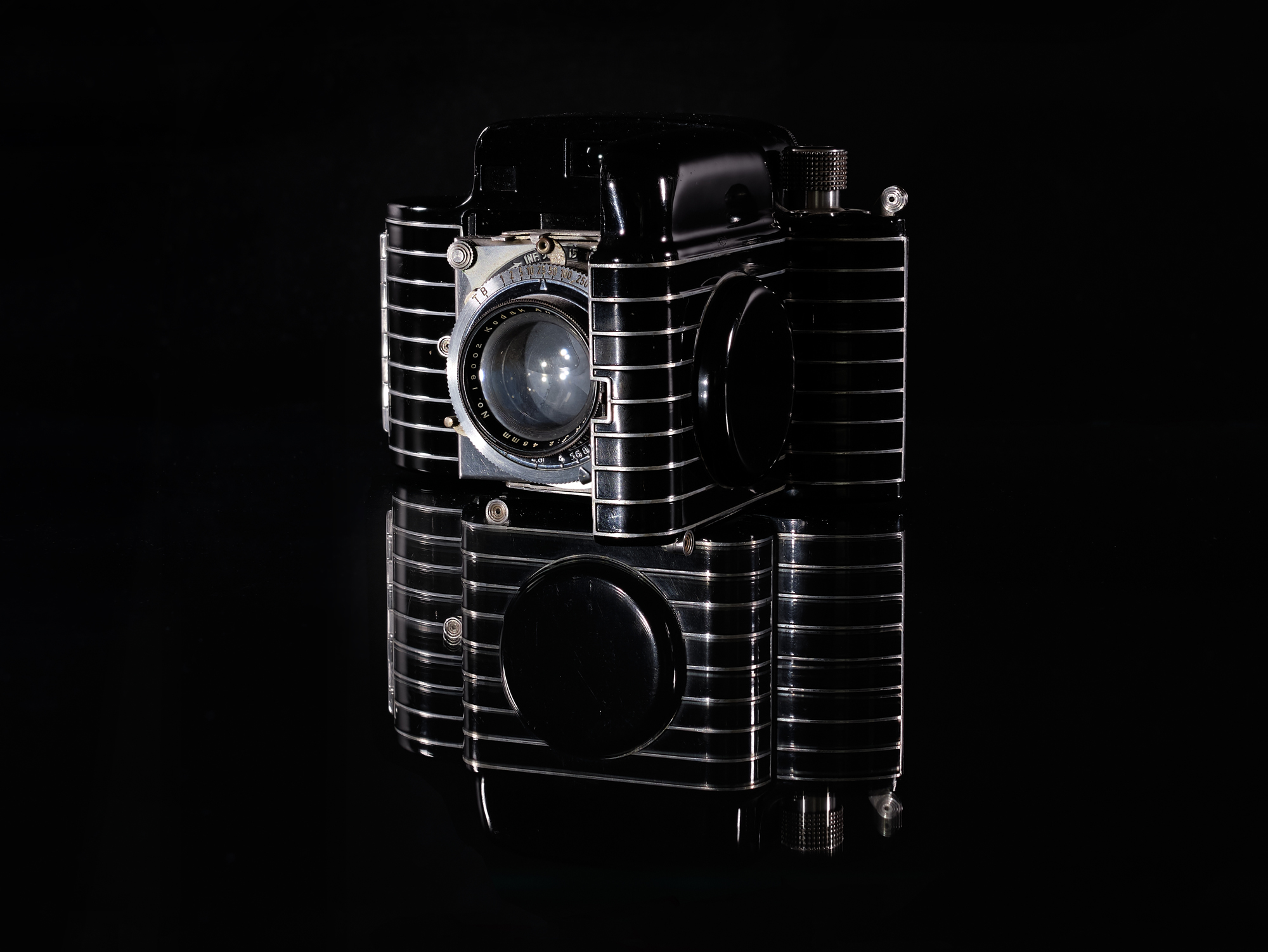
If you’ve indulged me by reading this far, thank you for your patience. Enjoy your photography after the lockdown and seek a sense of purpose wherever you find it!
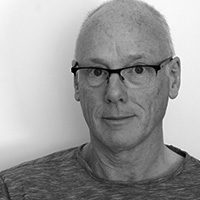
John Brownbridge is a retired marketing manager who worked for 40 years in the motor industry. He lives in Coventry in the English midlands and enjoys photography, listening to music and cycling along with keeping an interest in cars. He has used Fujifilm X cameras since the first X100 in 2012.

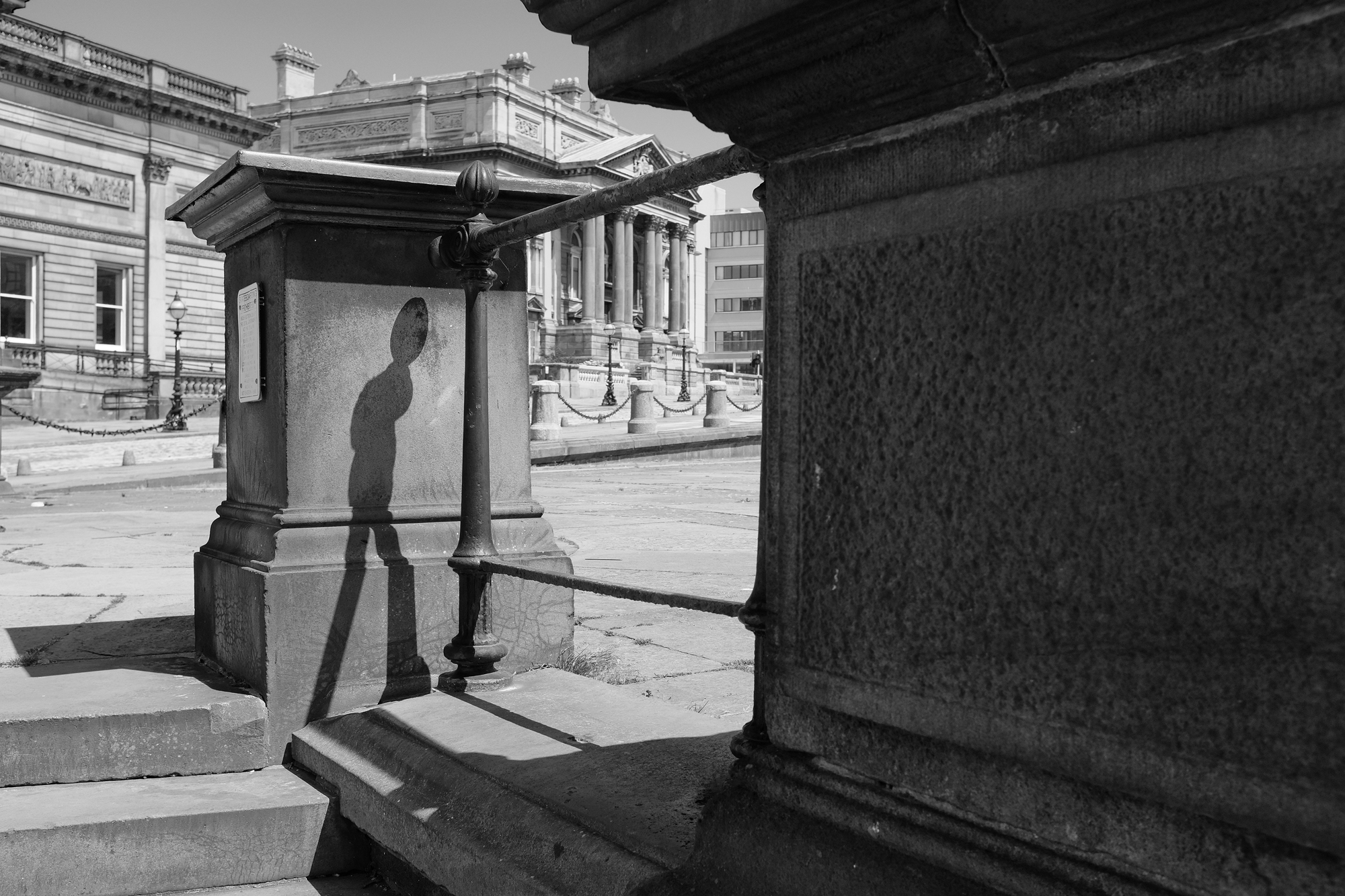



Jaime
May 9, 2020 @ 11:38 pm
Hi john, I really liked your article in a certain way I have felt very identified with your way of seeing things, even though I am missing a couple of years to retire if I have seen that we share the same tastes, photography and high fidelity music. I am editing my first photobook and reading your article has served me to inspire me much more ..
greetings .. Jaime Fuentes M.
John Brownbridge
May 12, 2020 @ 10:45 am
Thank you Jaime, I hope you enjoy editing your photobook, it’s also a great way to re-live the trips where you took the photos
Alex
May 12, 2020 @ 7:33 am
John – I greatly enjoyed reading your article and your images. Thank you for sharing!
Greetings from Colorado!
Alex
John Brownbridge
May 12, 2020 @ 10:46 am
My pleasure Alex. I’ve been to many states in the US but not Colorado – yet. Hopefully in the future!
Paul
June 10, 2020 @ 9:54 am
I really enjoyed reading this, John. Knowing you for a while now, I can say how reflective this is of your passion for photography and your style of writing captures the many conversations we’ve had on the subject. Most importantly, the images are fantastic.
Sudi Sudarshan
February 6, 2021 @ 3:52 am
Hello John,
This is Sudi! Sorry I lost touch with you a decade ago. I was searching the internet to find contact information about you and happened on this delightful article. I am very impressed with your photography work. I didn’t realize that you were so good at this!
Hope I can reconnect with you again. Please let me know how I can contact you privately.
Sudi